|
This is an IRRESPONSIBLE homeowner’s ignored loaded gun just waiting to kill someone. Not funny that it’s at my house. I’ve been looking at it for years. Today when I got home I let the dog out and she was running around under it as it blew back and forth like the masts on the “Caine mutiny” in the scene with the terrible storm as the ship was lashed by horrible winds and waves. Im gonna slice it up this week- more work. It just never stops. Look around your yard. See trees with a tilt? Bad crotches? Pulpy trunk? Cavities?? Holes where branches used to be? If you said “yes” to any of those questions, call a tree guy for removal. To ignore dangerous trees is akin to leaving a loaded and cocked revolver on the floor for a child to play with. WHY would you do that? Right, you wouldn’t. So if you have dangerous trees on your property, it is prudent to have them removed. The Boston Globe reported a few years ago that between 700-1,000 people in the US are killed every year by trees- a pathetic situation that we all should know about because there is no reason for someone to be crushed by a tree. I see articles in the nation’s papers showing pictures of trees that crushed people with the text stating “nobody knows” why the tree fell, but I can usually see from the pictures exactly why the tree fell and killed an 11 year old neighbor, or a family watching fireworks in the town green (both actual examples). The nation’s liability laws call these deaths “acts of god” to which I scoff. These deaths are not acts of god, they are crimes of negligence, and the laws need to be changed to reflect this reality. April 2020 update- new neighbors moved in to a house across the street, and when they did, I pointed out to the new neighbor twice how dangerous the tree in her front yard is. It’s actually two trees that grew as one up to about fifteen feet off the ground. The co-dominant leaders try to overtake the other but can’t as the yearly ring expansion squishes each touching side, compressing the tissue with wounding the result. Tannic acid is sent to the wound staining the bark in the most visible manner a deathly dark brown.. Added to this structural insult is the 20 degree tilt over the lawn and towards the newly-renovated house.
It’s been two or three years now since I first warned her, and the tree is still there. They must have forgotten about my warnings as they play with their newborn child on the lawn in the shade of that potentially murderous tree, having set up red plastic children’s toys below it. Here is a picture of the tree and a toy. Seeing this scenario when I drive by is absolutely horrifying, and I hope that when it does eventually fall, nobody is home. Predicting timing of tree collapse is like predicting earthquakes or volcanic eruptions, it's impossible to do, but it is an inevitability. One doesn't want to live life with regrets when it comes to life and limb issues. This spring as I toiled with all the beautiful perennial plants we sell, I studied flowers kinda like Einstein studied the heavens. I wondered why flowers have the shapes they have, the colors, the flower parts. Some flowers look similar, some look entirely and uniquely different, and I began to wonder “why” on a deeper level. 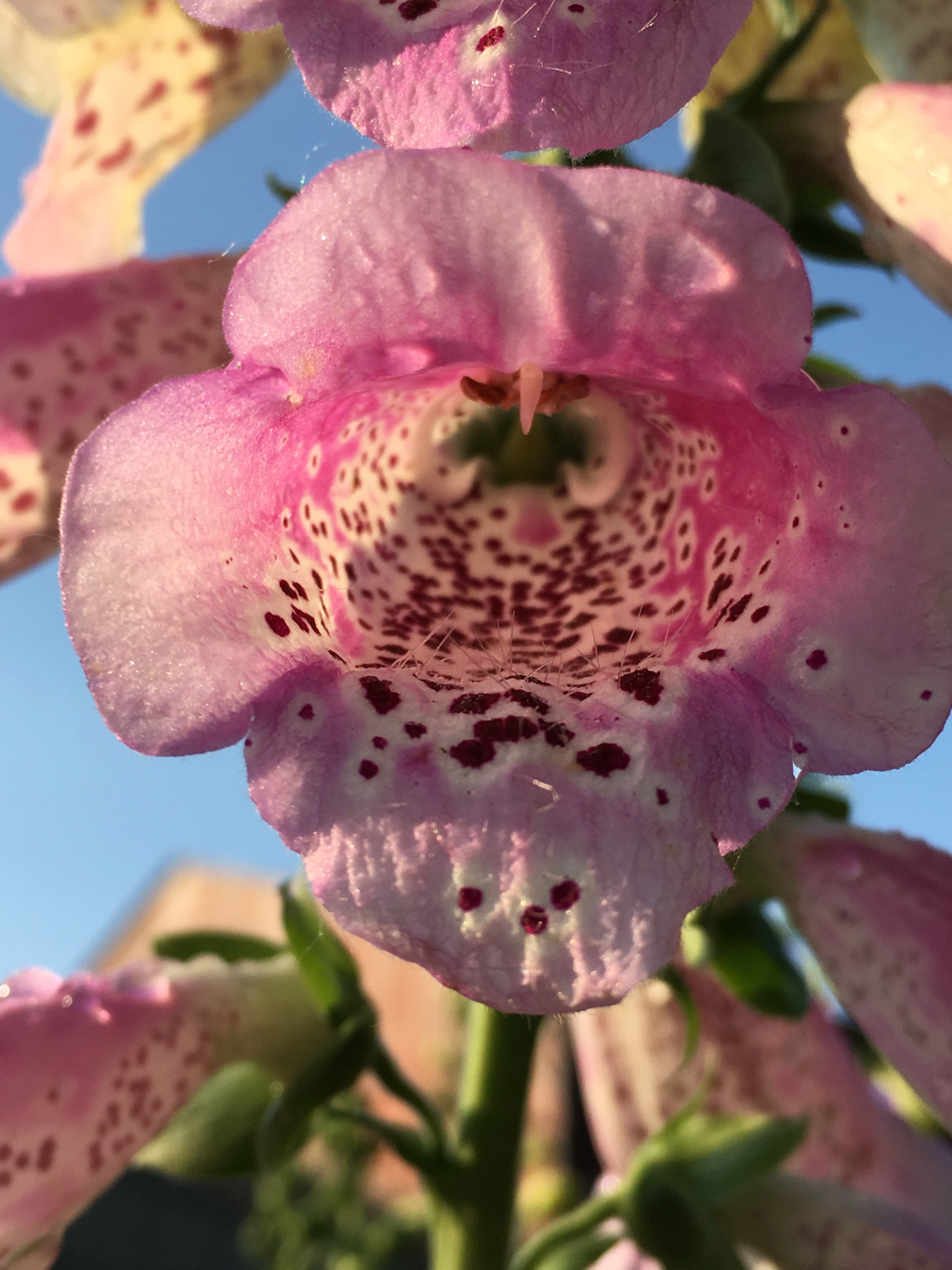 Bumblebee view of a foxglove blossom at the nursery last spring. Why the tube (keeping unwanted pollinators out)? Why the colors (visible spectrum of bumblebees?)? Why the spots (advertising to bees that there is lunch at the end?)? So many questions but where to find answers??? Harder to see on the top of the tunnel is a band structures that give the visitor pollen, and take pollen from the hair on the bumblebee’s back thusly pollinating. The pollen touches certain flower parts (anther?) and travels up toward the stem fertilizing the ovary then turning into a seed. COMPLICATED!!! It all started when I saw a bumblebee vibrate it’s way up and into a foxglove blossom- colorful, intriguing, and mesmerizing. It was a perfect fit, like when my foot slides perfectly into my six month boots before work- made for each other. Because the relationship seemed preordained, I wondered how many years it took for this particular flower to become so cozy with this particular insect. Knowing the glacial pace of evolutionary change, I concluded that it must be MILLIONS OF YEARS. My relationship with bumblebees dates back decades. I used to pet them as they pollinate. THEY DO NOT CARE. They go on about their business uncaring about the world around them- single minded, focused. Pretty cool characters, maligned in the human’s uneducated uncaring world, the unsung hero pollinators, with honey bees getting all the positive press. 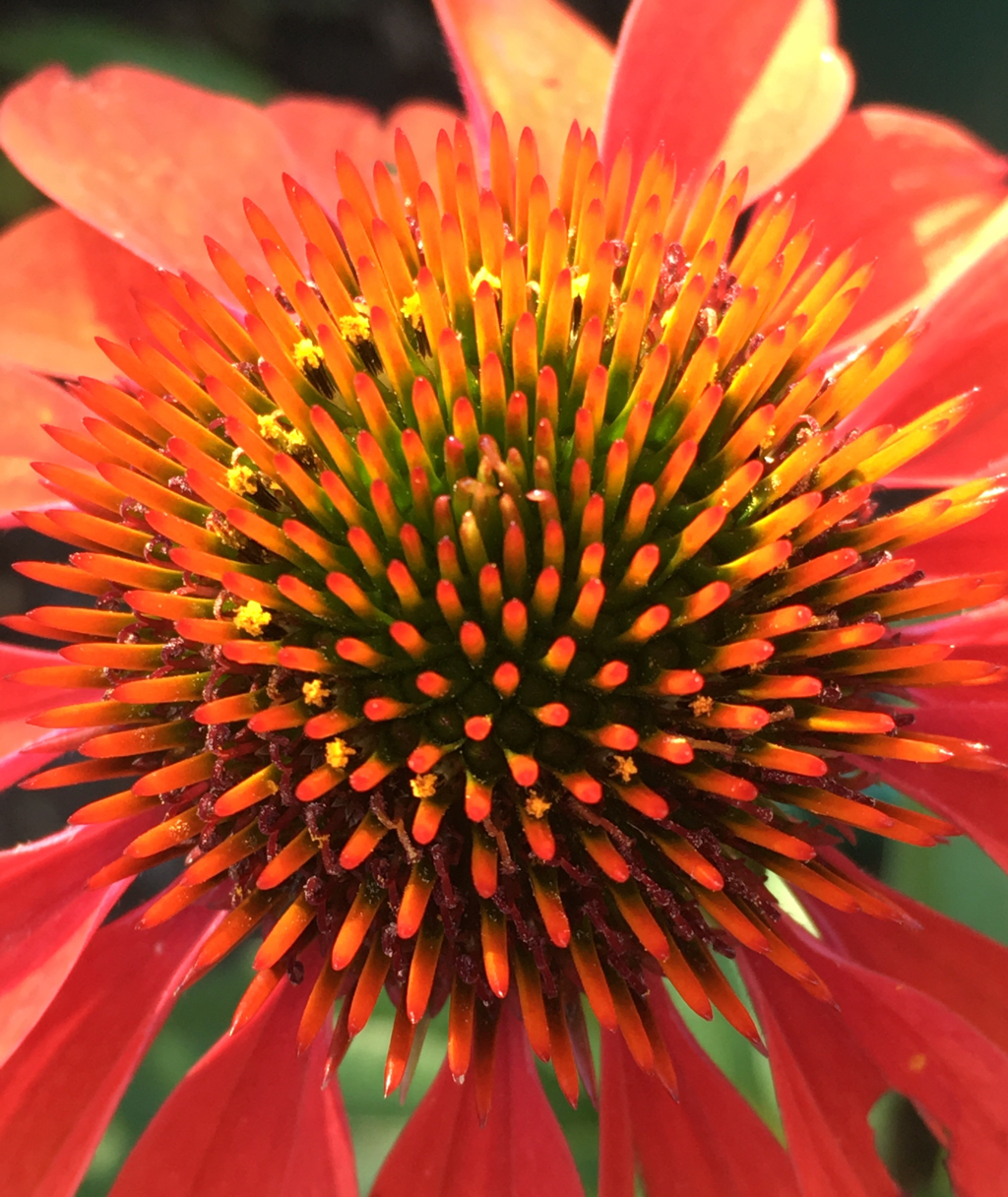 Echinacea feed TONS of forms of life, Pollinators and birds alike. Who can blame them with such beauty. Humans see this flower as the WHOLE THING, yet insects see it for the TINY LITTLE yellow blossoms down deep inside the orange spurs. Insect friends need to lean down deep holding on tightly to pollinate. My questions about insect/flower evolution continued from flower to flower. This echinacea offers lots of feeding stations for every conceivable insect, everyone leaving well-fed. Echinacea flowers do not seem to attract insects with specialized body parts, unlike this knifofia perennial. There’s no place to land. Whomever pollinates this flower has to hover in the air and stick its probiscus way down deep whilst flying. Which insect? Why? Where did this specialized evolution occur, how long did it take to evolve? These and other questions bounce around inside the questioner’s brain with no clear understanding in sight. Out of focus honeybee toiling away last spring on campanula. It’s hard to slow down time long enough to capture some pollinators. Campanula blossom seems pretty easy to land and pollinate. ANY insect can do it. Balloon flower. What the hell? Why does it do this? After it opens, it’s a normal flower but before then, it’s out of this earth wonderfully interesting. Evening primrose flower blindingly stunning. Obviously this flower uses just one attribute to advertise to insects. Delphinium flower with tangled up body parts. How does an insect pollinate it??? Why so complex? It must be to keep out some and attract others, but WHY? Writing this blog takes a lot of time and energy. I took a few days off and now I’m back. The next picture shows Trollius globe flower, native to Russia. I stared at this flower for a long while. I see the brachts. I see the stamens. But what are the vertical flower parts for? Mother Nature wastes no energy making stuff for no reason, so I looked it up on the internet and actually found out what they are and what the flower does with them.
The vertical bars are plant filters, designed to allow a certain pollinator fly in to pollinate yet preventing anything bigger than that tiny fly in. That tiny fly pollinates the flower then lays eggs on the developing ovaries. The eggs hatch then eat no more than 25% of the seeds. The fly Pupates and flys away as an adult, completing its life cycle. The plant, deprived of 25% of its seeds, gets to propagate its species. FINE. But why? This one flower evolved with just ONE insect over millions of years, both developing specialized parts and sizes for a reason, but why? Will we ever know the wizardry of Mother Nature’s secrets? The magnificence of the insect world is lost on humans- we JUST DONT CARE. We better start caring before they are all gone, because it will be millions of years before the earth will ever produce such wonderful beings again. Humans are eradicating thousands of species a day (I made that number up but I’m not far off). What’s it going to take for normal people to give a shit about these wonderfully evolved innocent beings? Link to study on trollius pollination- caution- very scientific! link to study: https://www.bio-conferences.org/articles/bioconf/full_html/2018/02/bioconf_pdcmb2018_00018/bioconf_pdcmb2018_00018.html Groundcover perennial geranium with your mesmerizing veination, can’t wait for your return! Sexy veronica, belly dancing your way skyward for the pollinators! 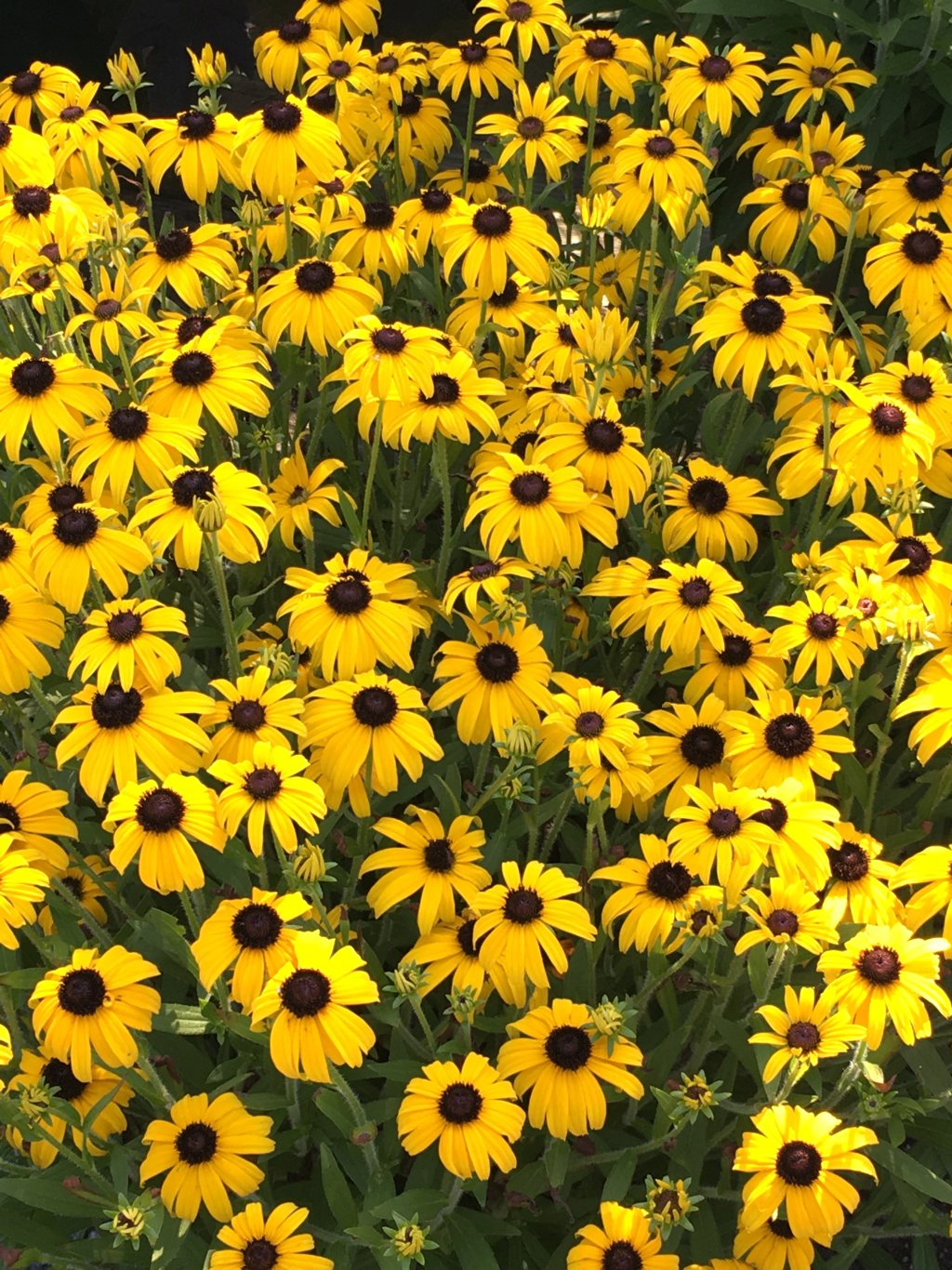 Black eyed susan, OBVIOUSLY! I wonder whom you were named after???
Pollinator pathways are made up of people and municipalities who have taken environmentalism into their own hands. If Washington won’t take any steps towards saving endangered insects and birds, well, we’re gonna do it ourselves! ONE PROPERTY AT A TIME. 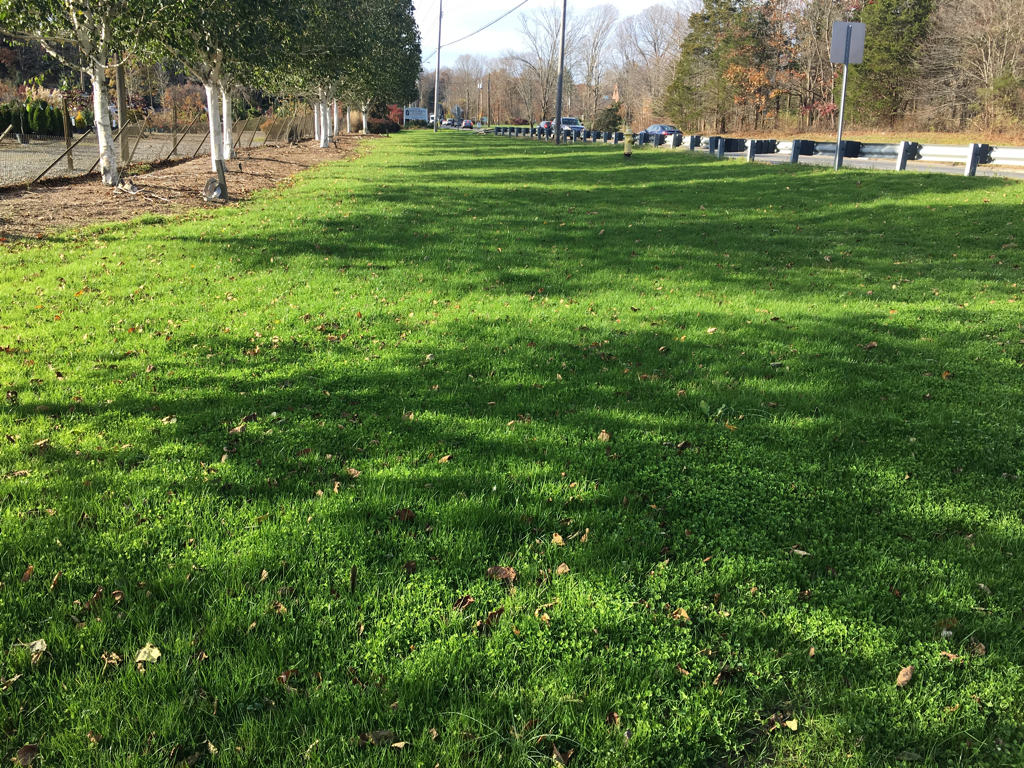 I killed my weedy crappy lawn out front that would have taken toxic chemicals to rejuvenate and reseeded it with clover and tall fescue. In SIX DAYS it came up and this pic is three weeks later. It’s NEVER BEEN FERTILIZED, because the clover fertilizes it for FREE. For forever!!! No more buying food for your lawn. No more STUPID ASININE “four step lawn programs.” This lawn will never ever need fertilizer, weed killers, insecticides, and because lawns with clover are dwarfed from the clover effect, it does not need to be mowed as often. Less time spent babying your lawn. No TOXIC CHEMICALS EVER AGAIN. Less mowing No feeding. NO MORE $$$ spent on your grass. Best of all, native insects eradicated by human selfishness have a place to get something to eat. I started my own “movement” at the nursery fifteen years ago when I realized that I hadn’t seen a honey bee in decades at the nursery. I had been spraying acephate (systemic insecticide) on everything preventatively. Why? So customers could get insect free plants. What was I spraying to kill?
I dunno. I was just doing what we in the industry do. For the customers. To hell with that, I said to myself! That first year, the honeybees returned, and I saw three monarch butterfly larvae for the first time in my life. I captured them, gave em to my kid who took them to school to pupate, nurture, and release in the courtyard with the class. I just woke up- it’s Sunday morning and the sun looks like it’s been up for HOURS. What a total waste because this afternoon around four thirty it’s going to be DARK. DEPRESSING. SAD! Why do they waste sunlight before people get out of bed? This time of year, I slither into bed a few hours after dark which seems like a pretty pitiful lifestyle for we who live north of the Mason Dixon. I’m continually impressed with our sod quality. I’ve just gotta say that you just can't find sod grown under better conditions than our Yankee Stadium supplier. After it’s delivered to us we take pretty good care of it. The sod is two years old, 90%bluegrass, 10% fescue. It’s unrolled within a few hours of delivery and after that treated with love and respect. At box stores you better get it immediately after it’s delivered or don’t buy it. It generates its own heat and starts to decompose immediately. Did you ever get to inspect a white face hornets nest? Bet not. They are a nasty insect to encounter in a dark alley yet they are an incredibly complex and important insect. Their life cycle ends with the first few freezes and then (and ONLY then) can one inspect the pure genius of their construction industry. They chew trees and make paper out of the cellulose from which their basketball-sized nests are made of. There are air conditioning vents throughout, with nurseries for raising offspring, living quarters, maintenance shops, etc. They eat a broad array of insects for which they never get any credit. When threatened, they act as one- fearlessly attacking aggressors hundreds of thousands times bigger than they are. I know this for a fact. I would always destroy these nests every time I found them. It was FUN. Then I grew up and saw them for what they really are, and my transition from a stupid ignorant human was complete. Not fun facts: American native insect populations have plummeted to 25% of what they were in 1970 (ramifications of this? If you do not know, shame on you). German insect populations are down 90% (home to Bayer chemical company). Boycott Bayer chemical company-Satan of the planet’s environments.! North American bird populations have been ERADICATED to the tune of three BILLION birds. Who cares? Its like we live in this fantastic parallel universe right next to the universe where our own destruction is playing out one invisible extinction at a time. We are placated by the nonsensical in our lives, as the truly important drama is playing out right there for all to see and be ignored. We have no time left to do anything at all- it’s now or never. These organisms are the tip of the iceberg- indicator species. When their numbers reach the tipping point, it’s over for us too. Global warming-induced erosion in RI. Columnar ginkgo trees expressing their glee at the arrival of cooler weather. The plant in the photo is a thirty year old “amsonia hubrectii” that Junebug planted there to show people what it does during the year. It’s common name is blue star but it should be named after it’s golden school bus yellow fall color instead.
This plant never gets water, food, or any sort of love ever- never has. It endures stress, drought, neglect with no complaints, and performs like clockwork each and every year. The gentlest breezes makes this plant look like it’s on the bottom of the seabed, waving gently back and forth moving as if with the tides. Deer proof, colorful, looks pruned when never pruned, soft like moss to the touch- a more trouble-free perennial you will never meet. Nobody owns these, which makes them a unique addition to your yard. |
Winter hours-
|
Telephone(203) 261-3926
|

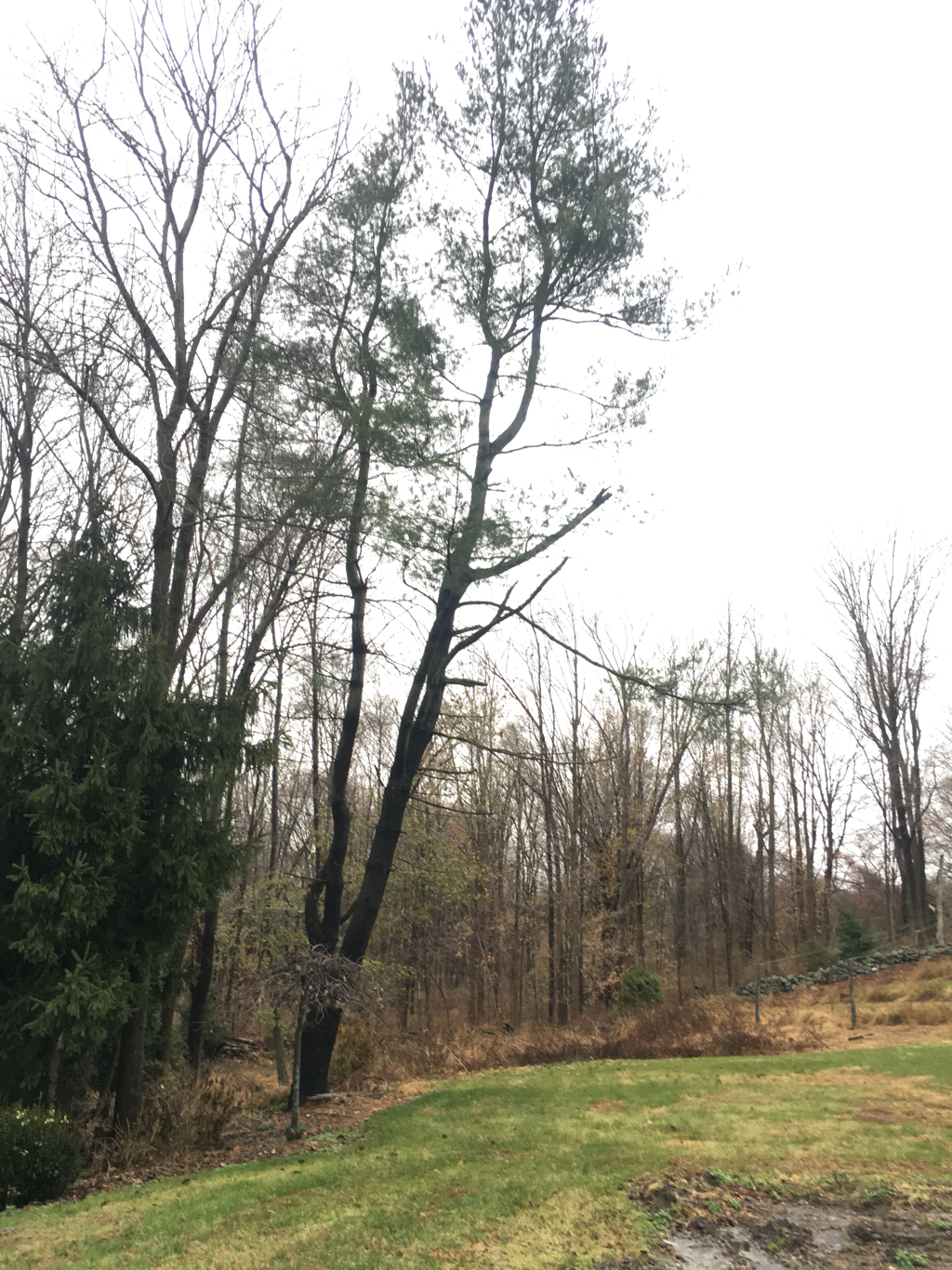
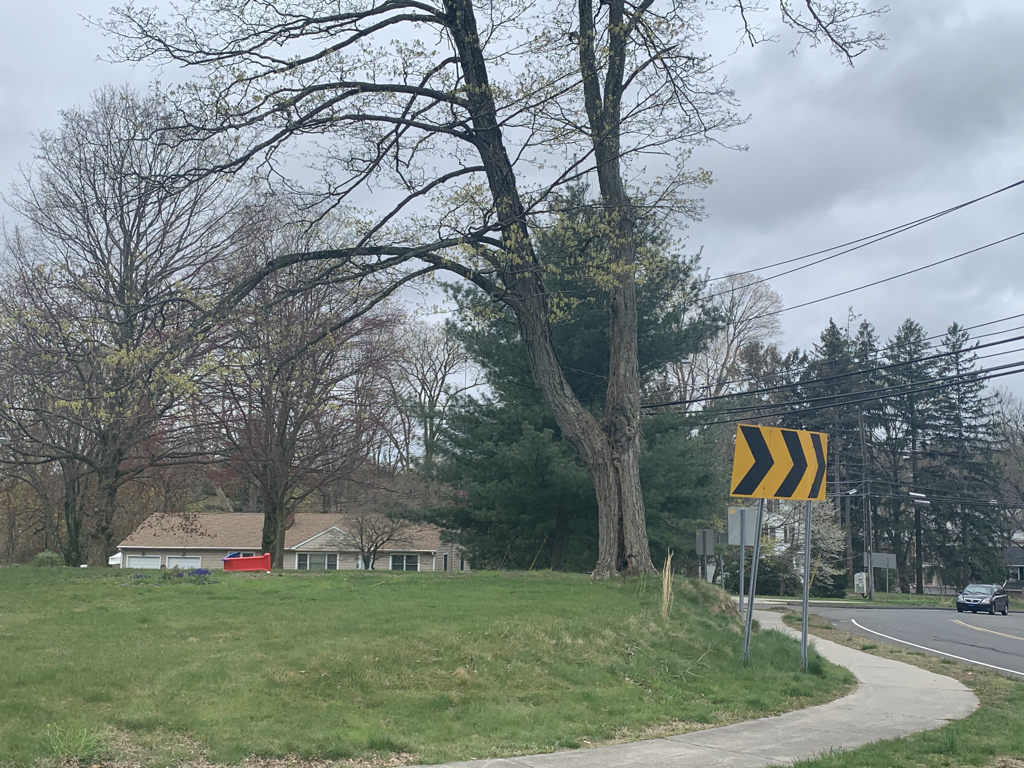
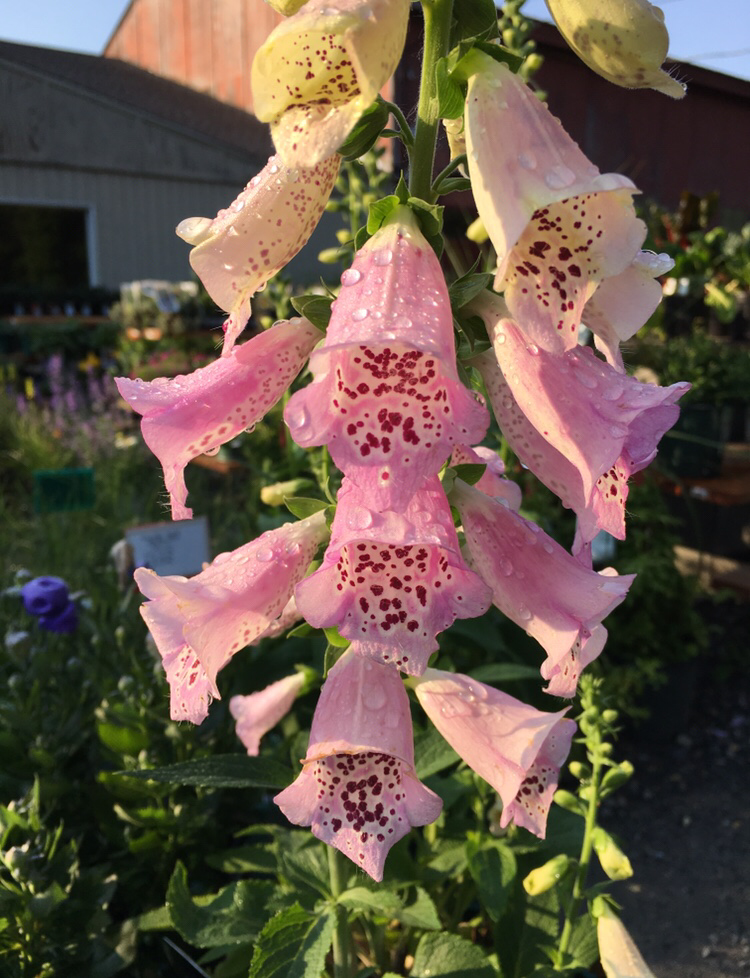
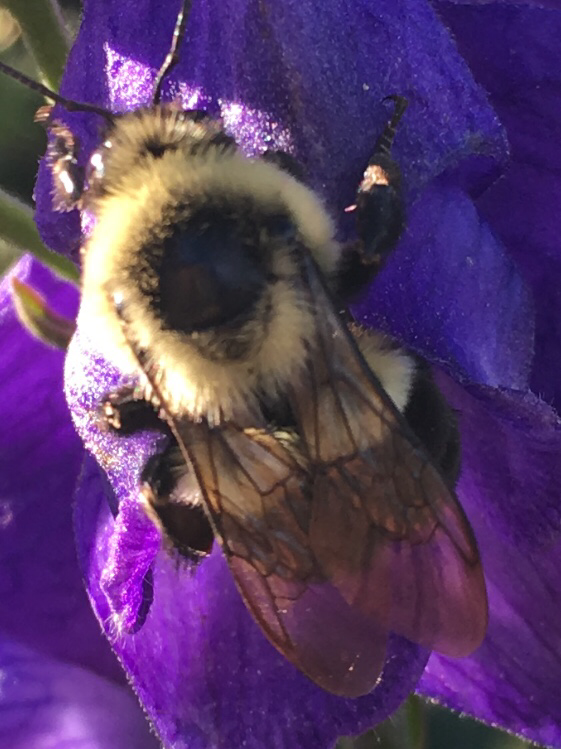
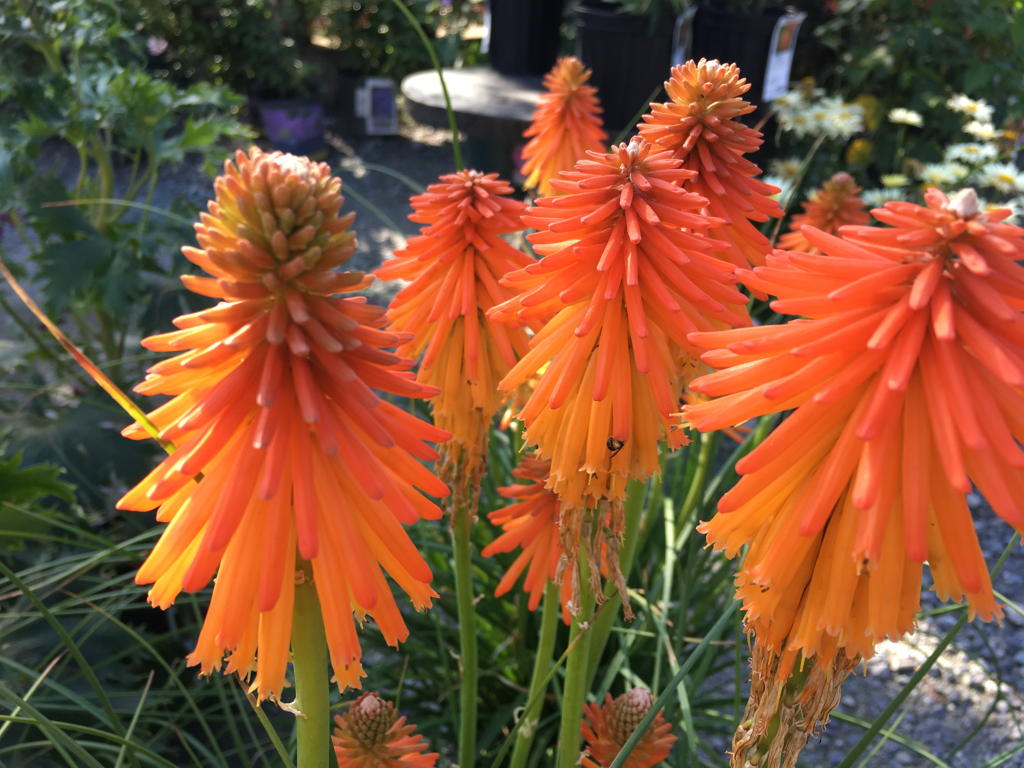
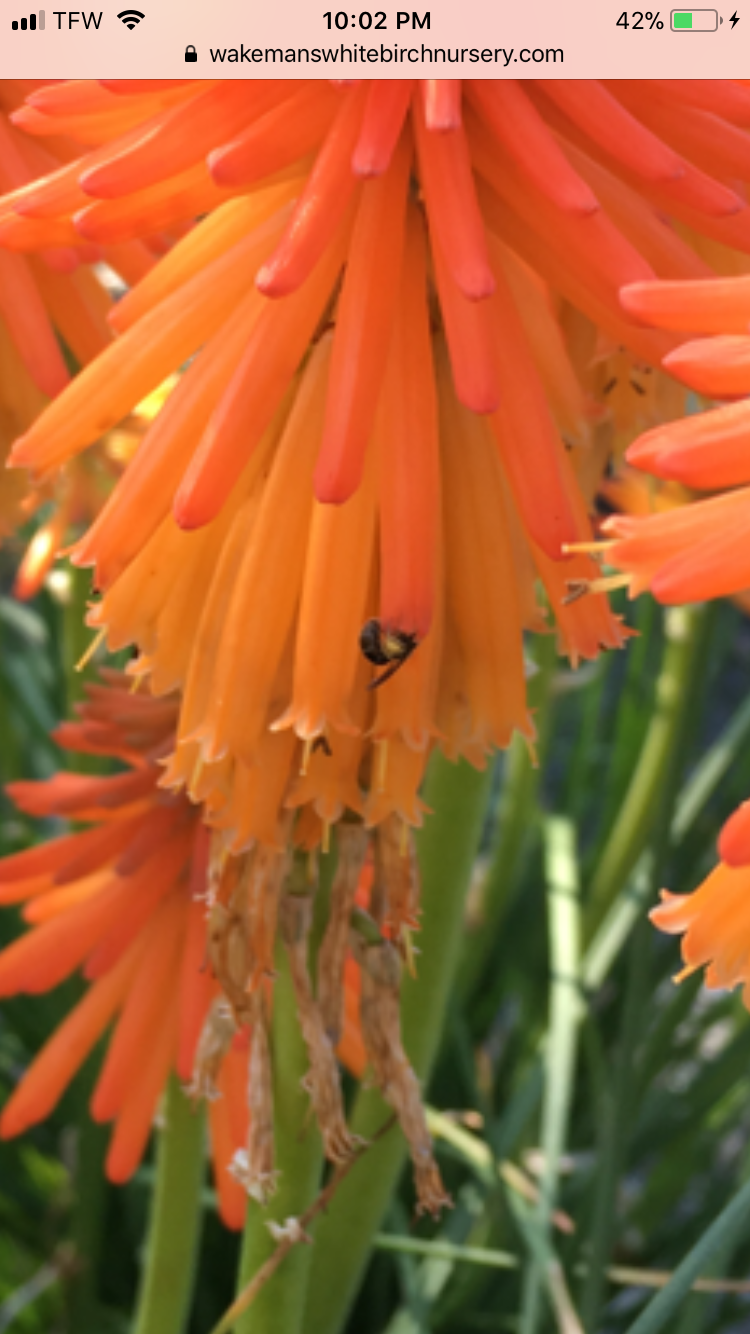
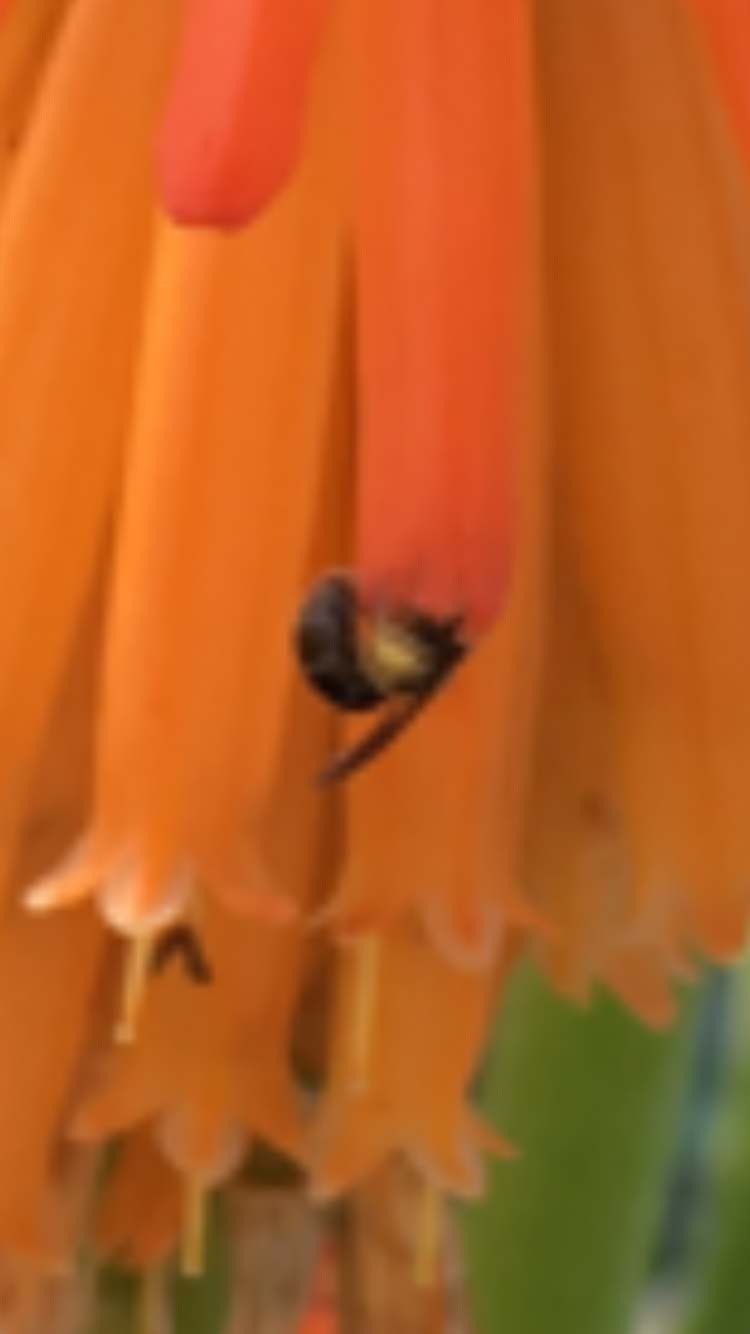
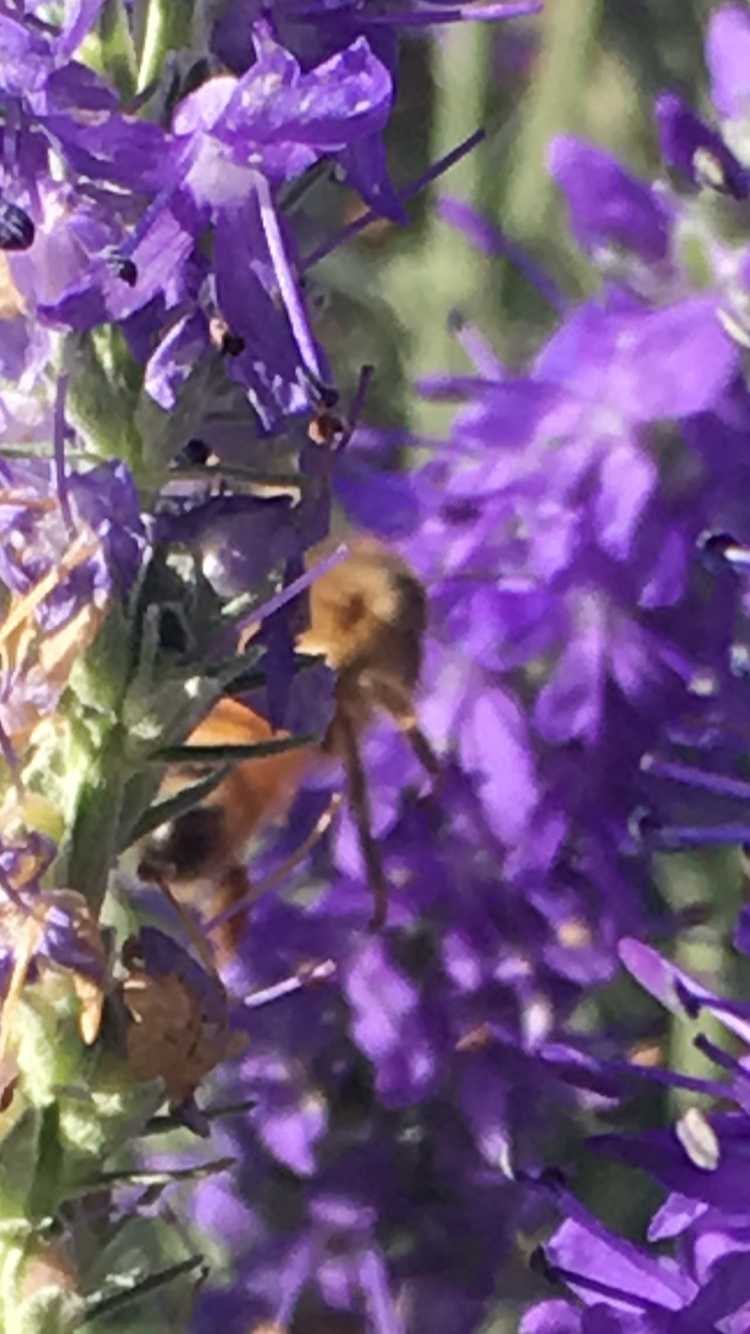
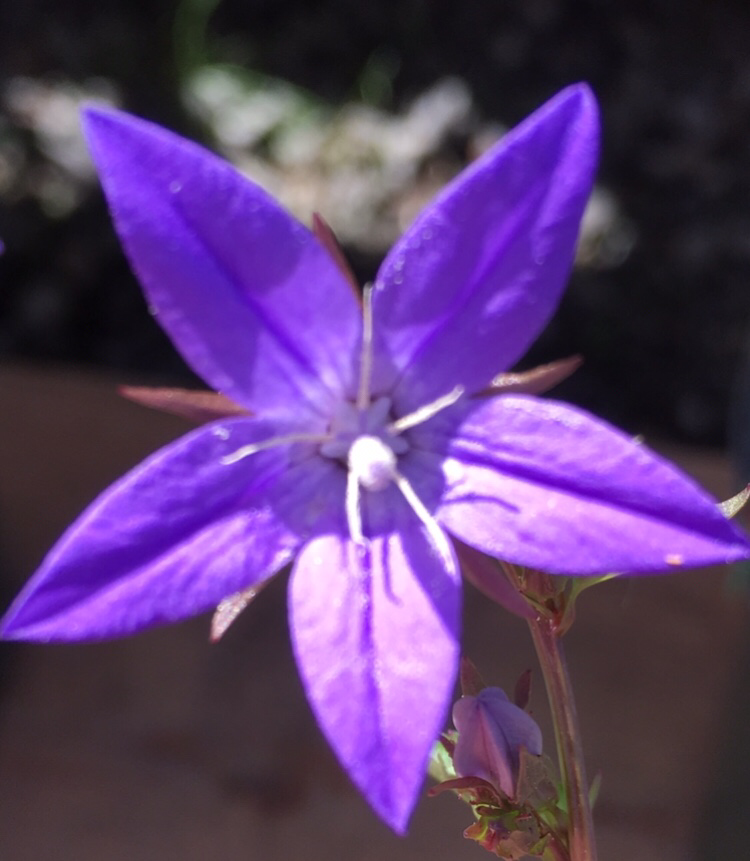
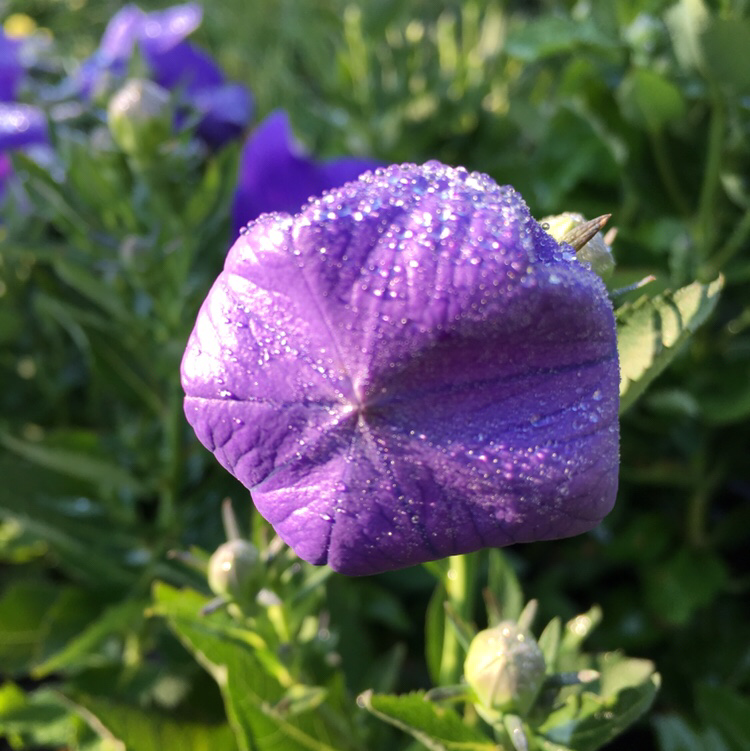
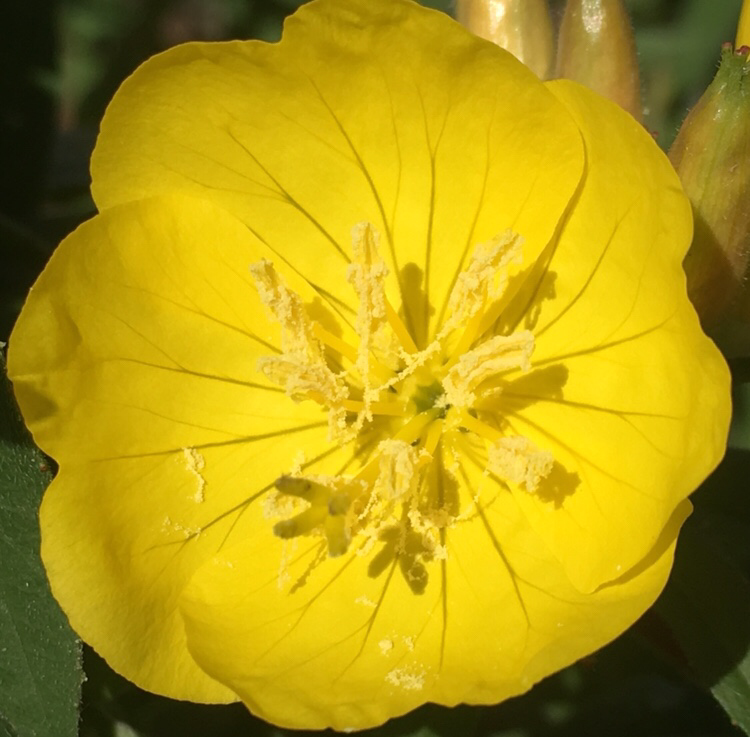
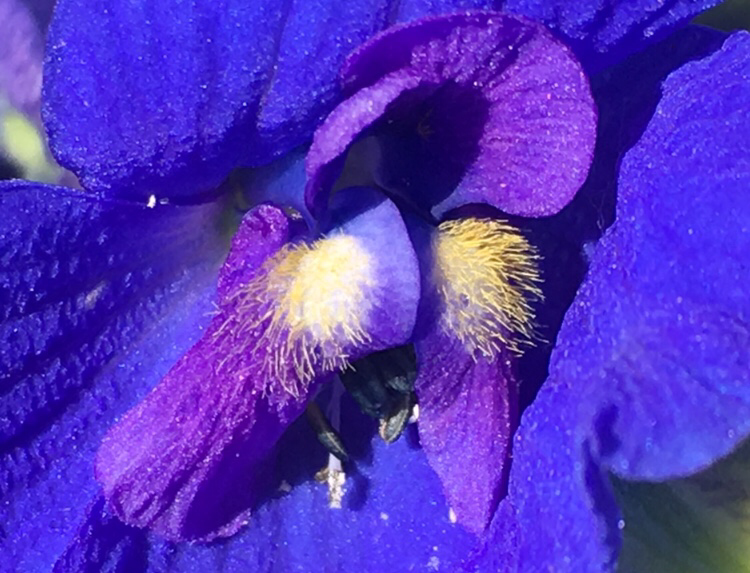
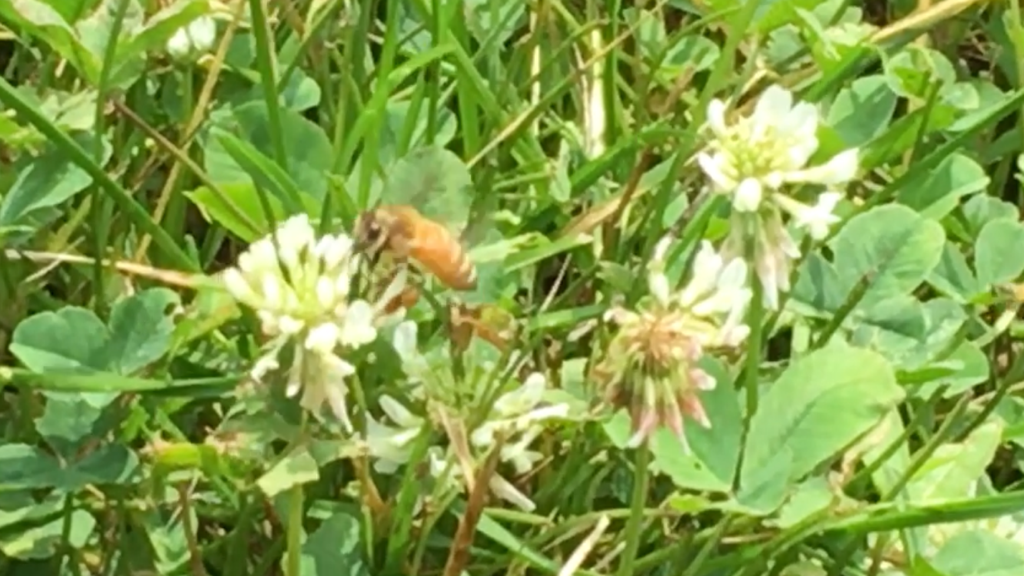
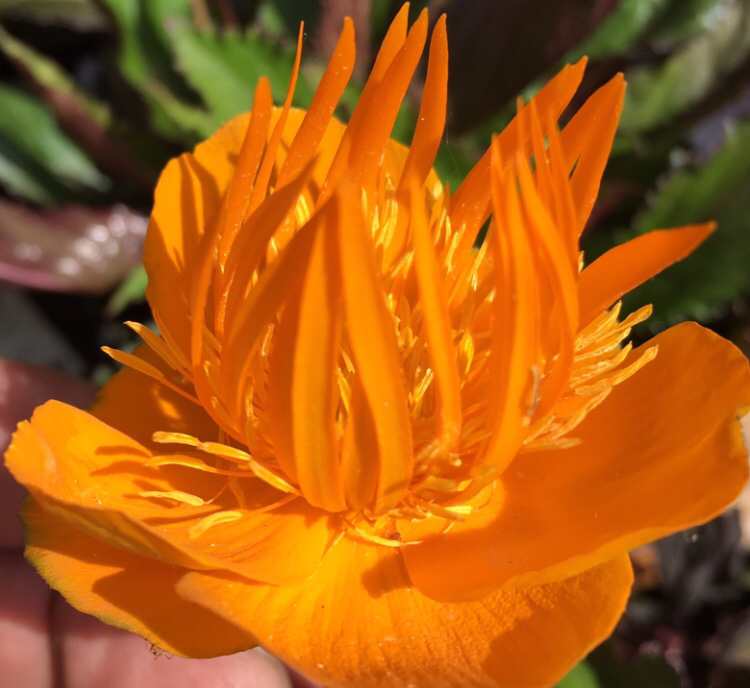
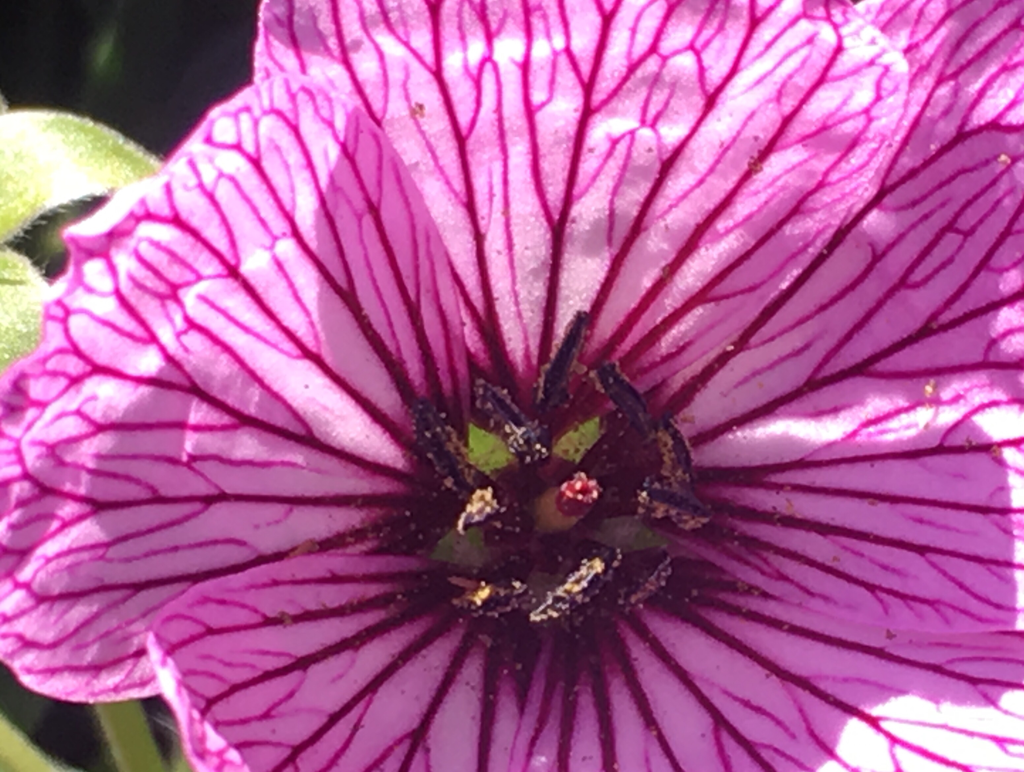
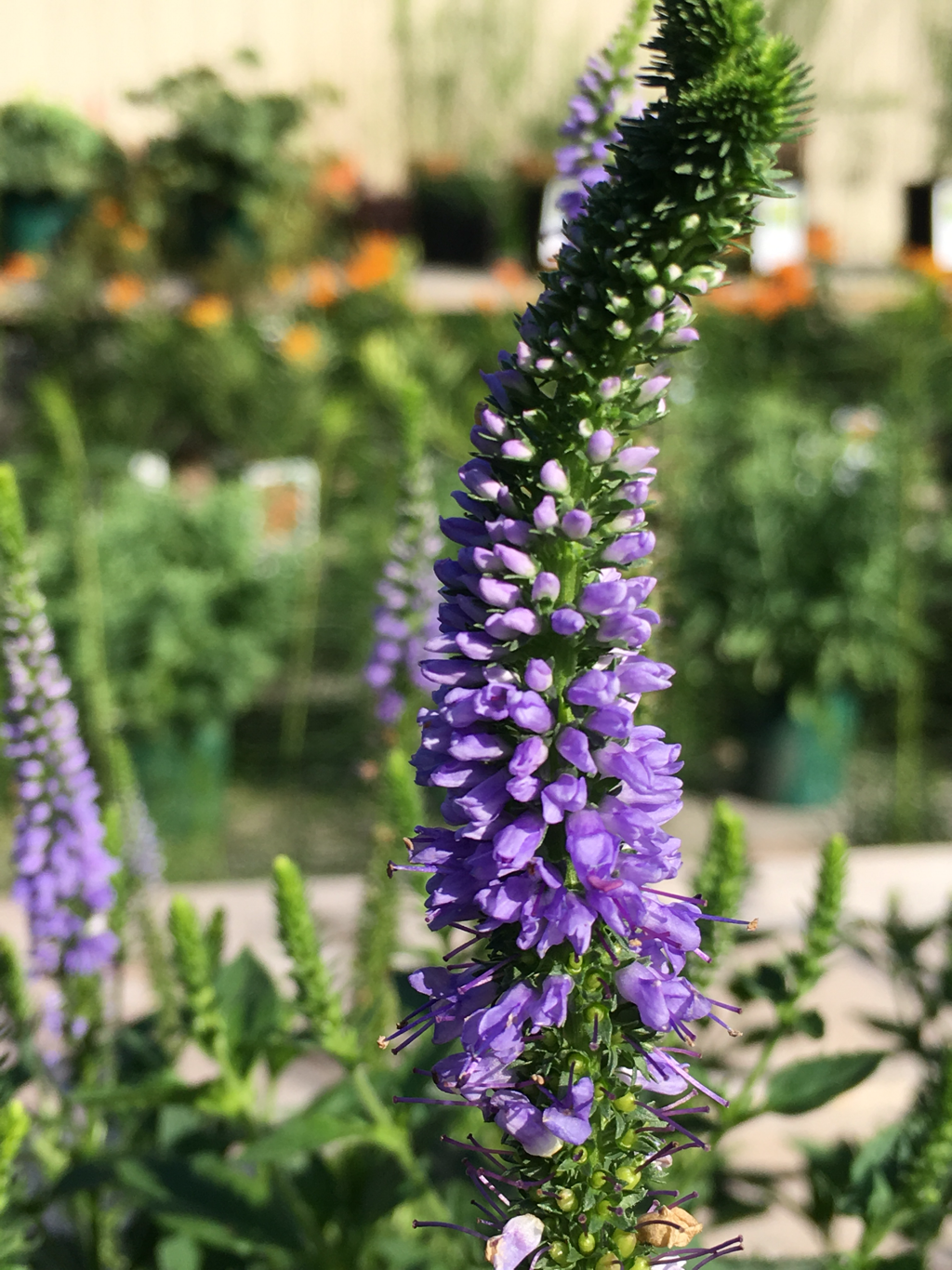
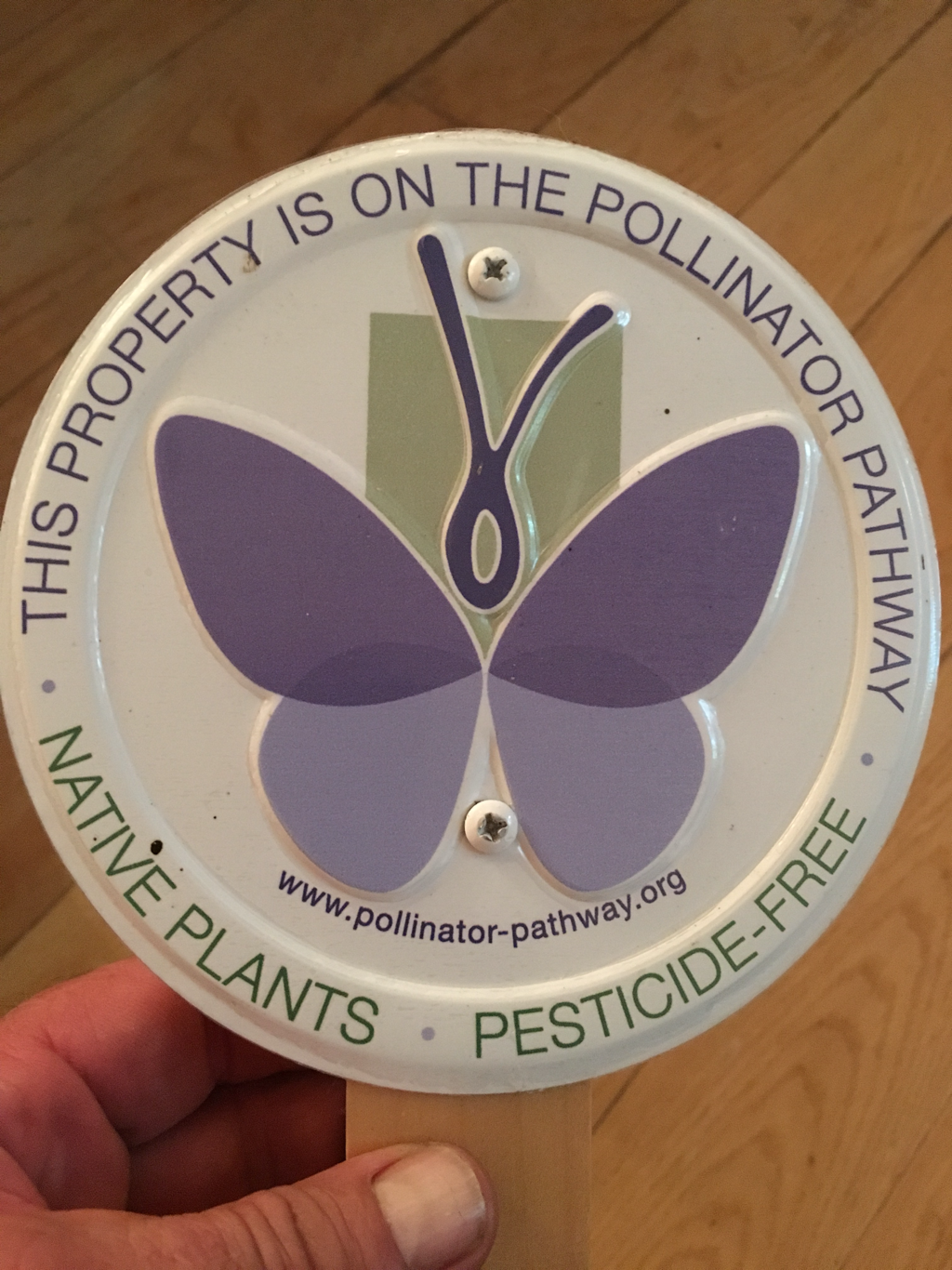
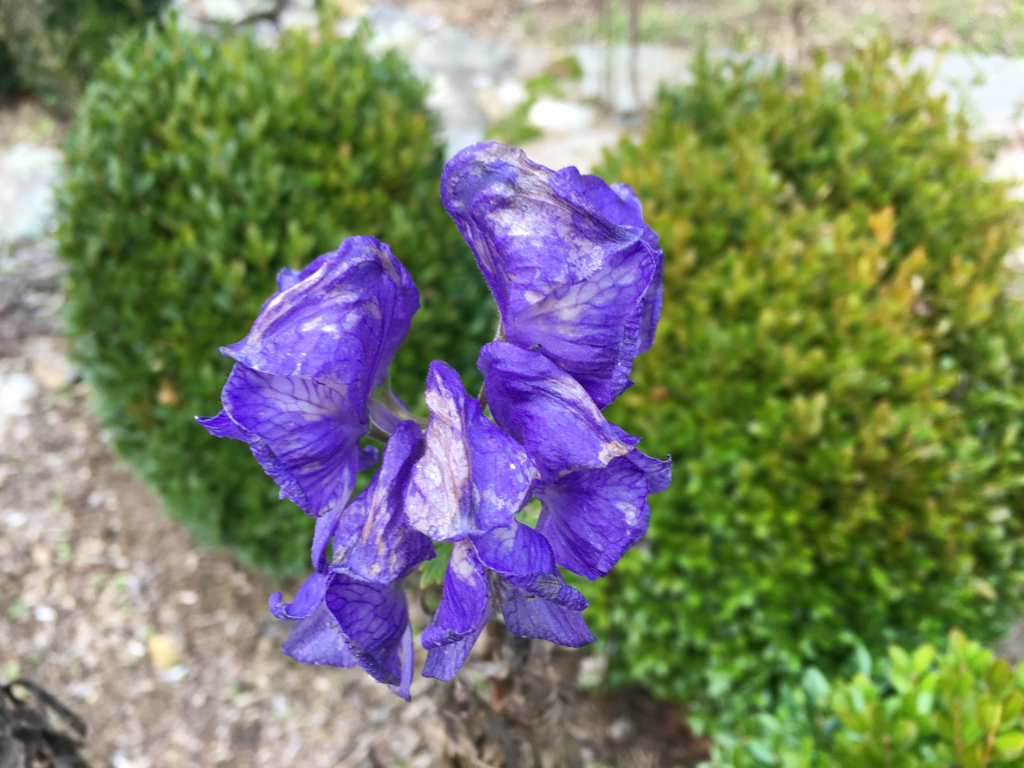
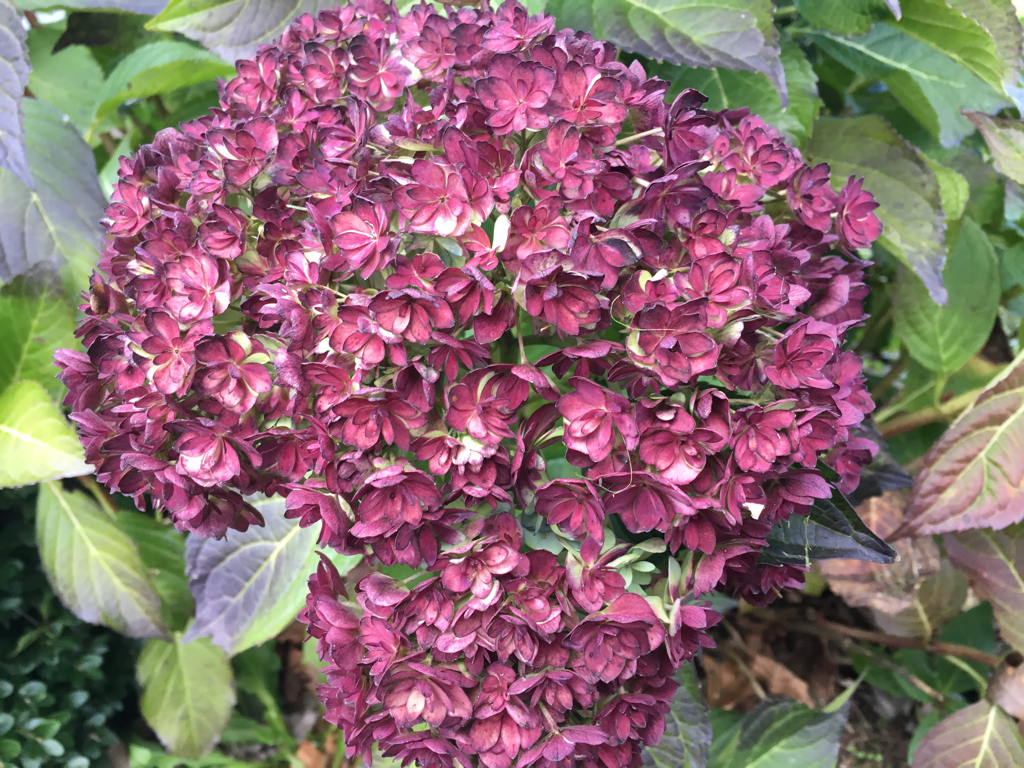
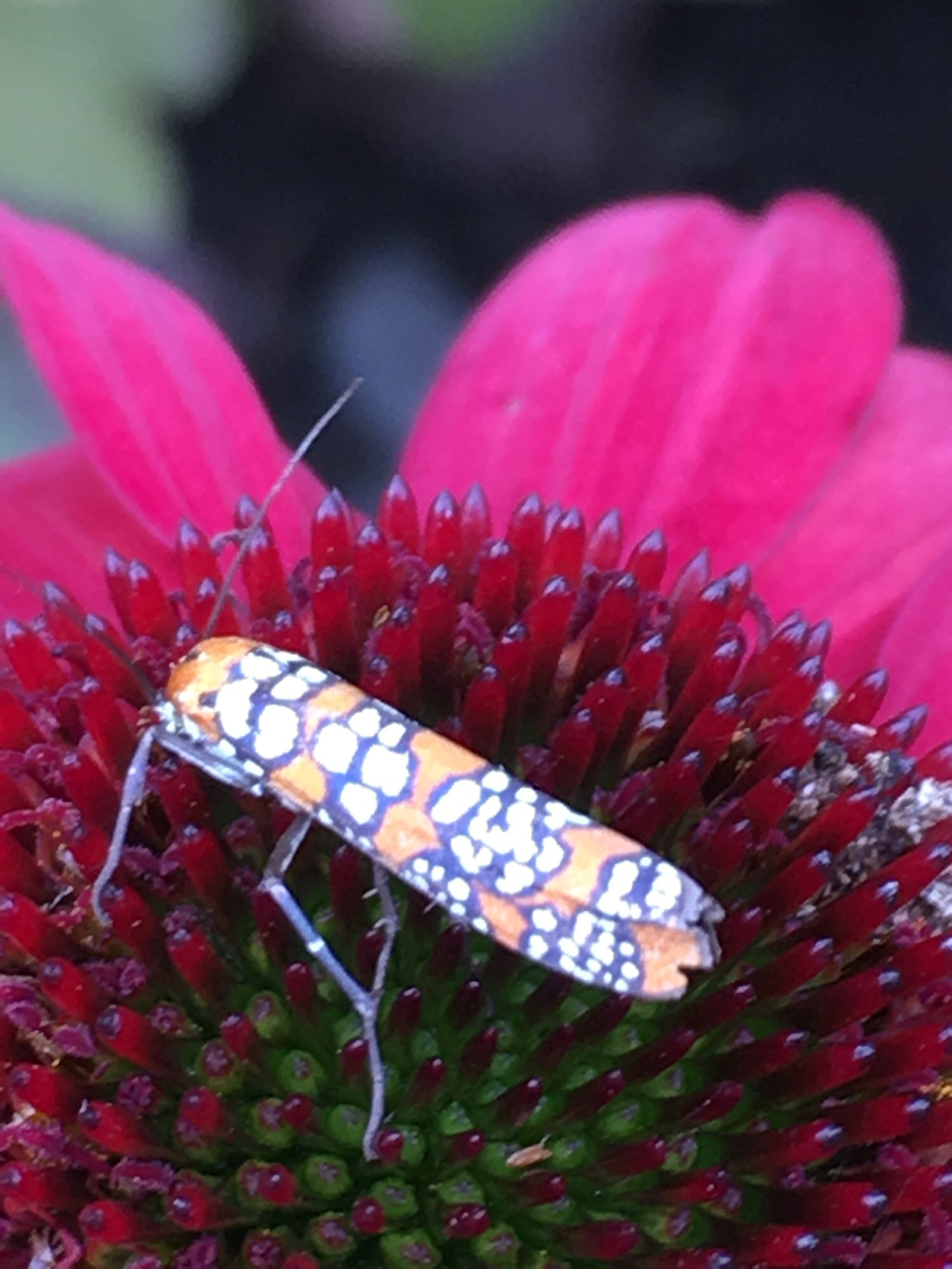
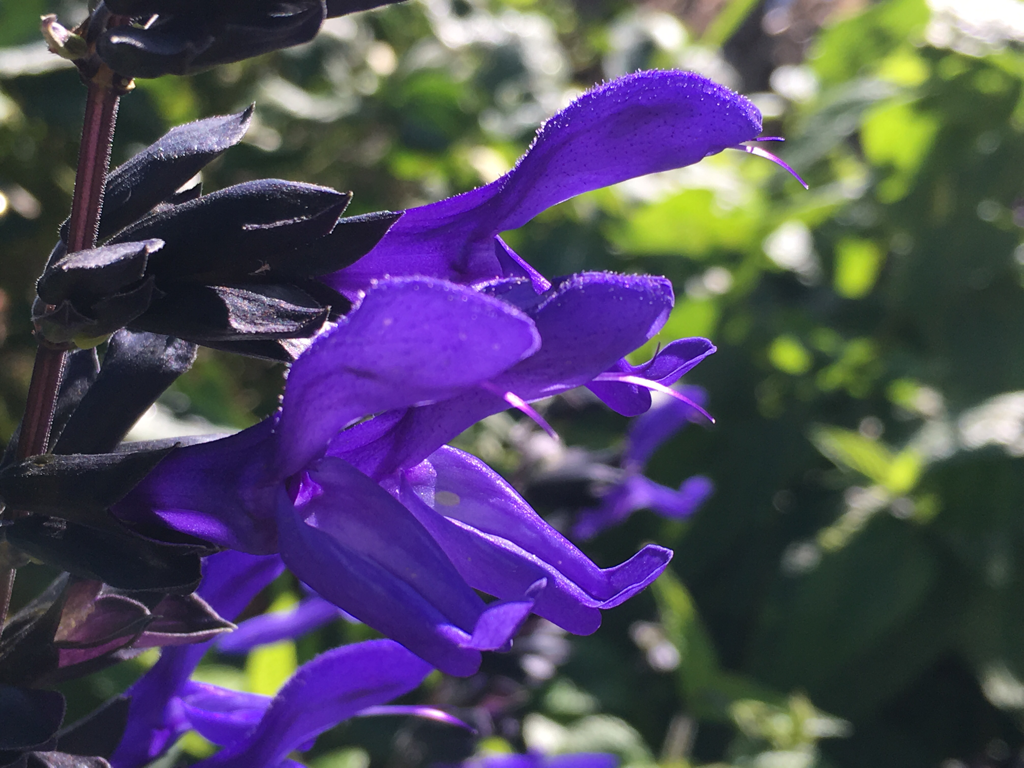
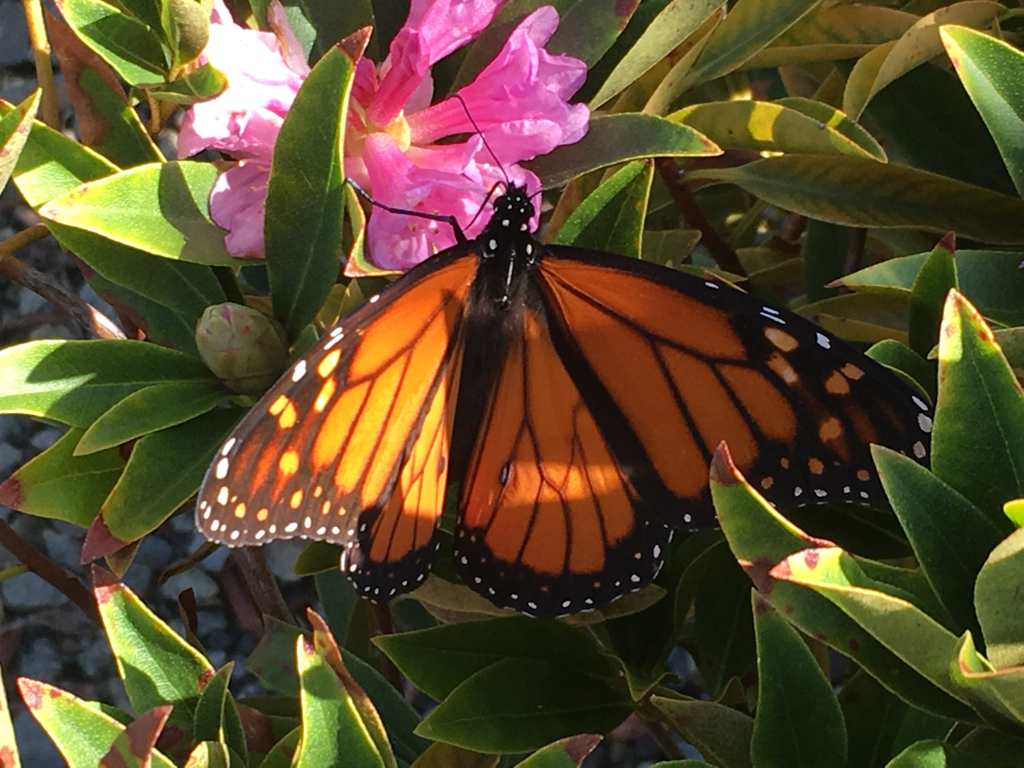
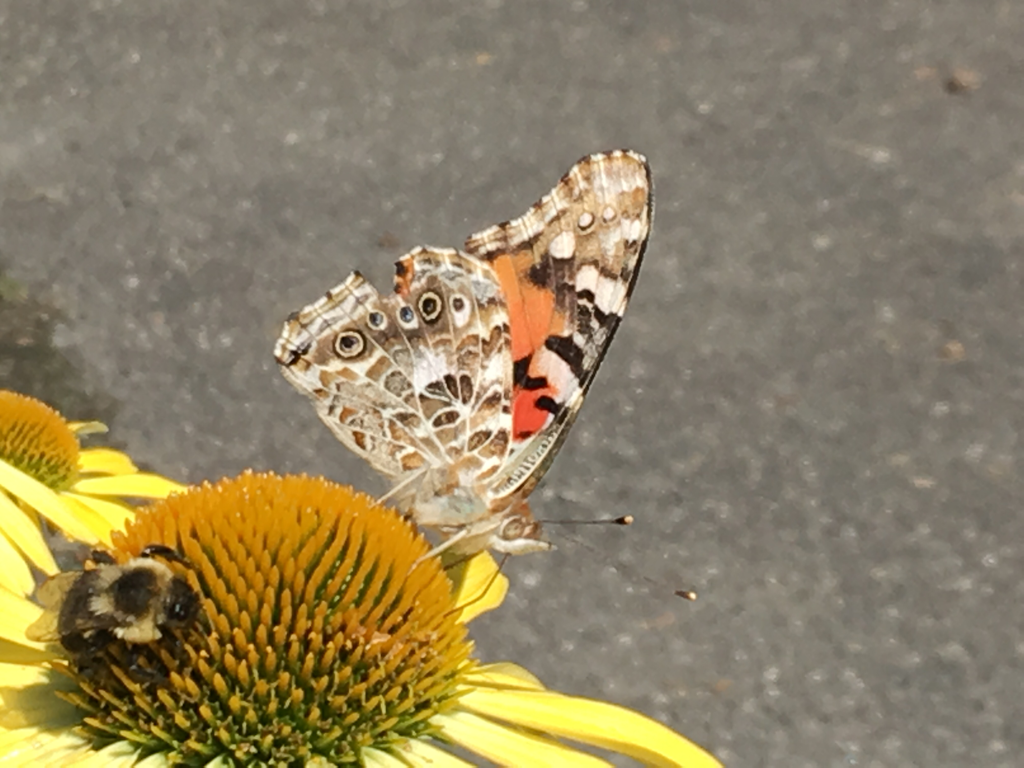
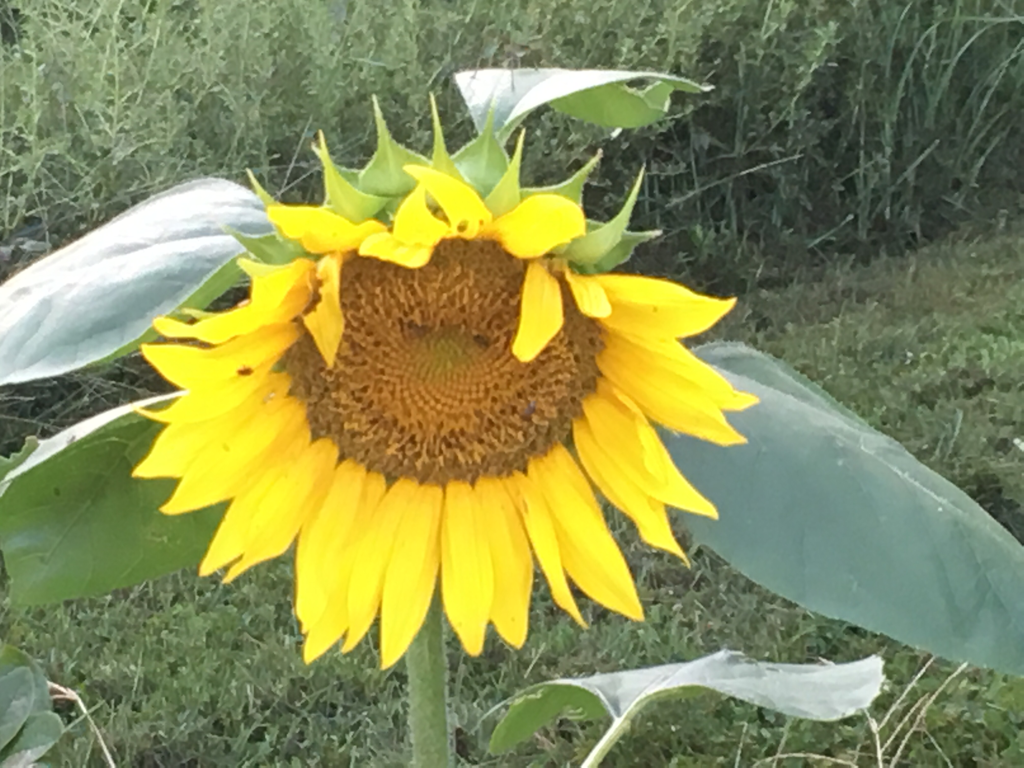
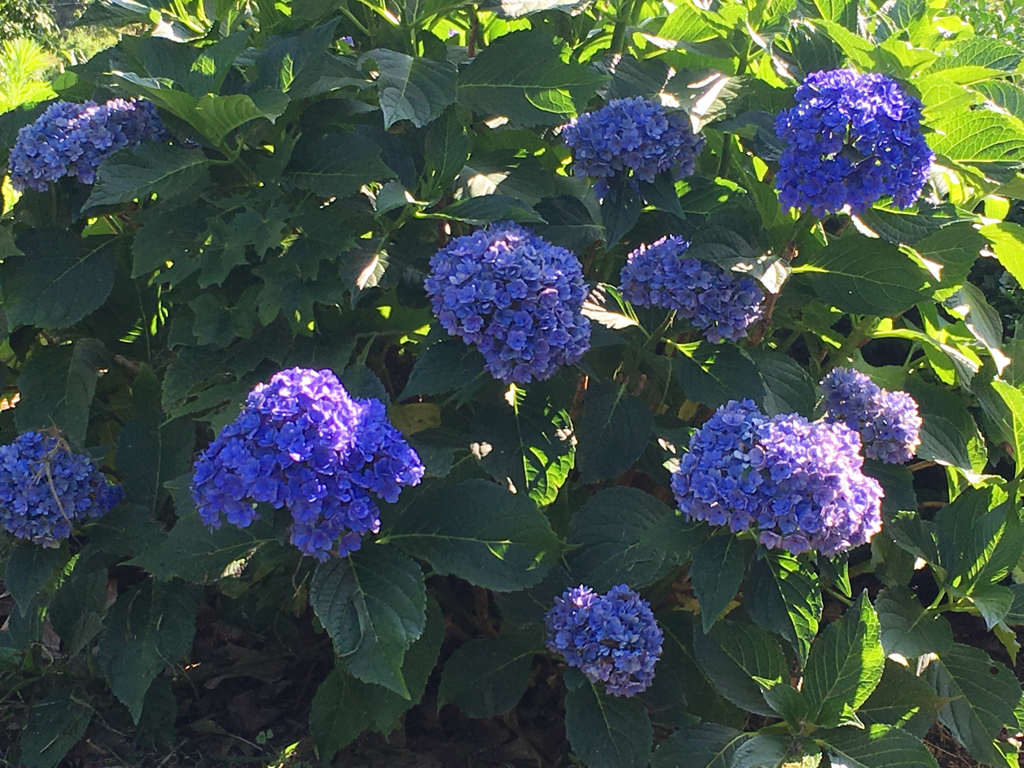
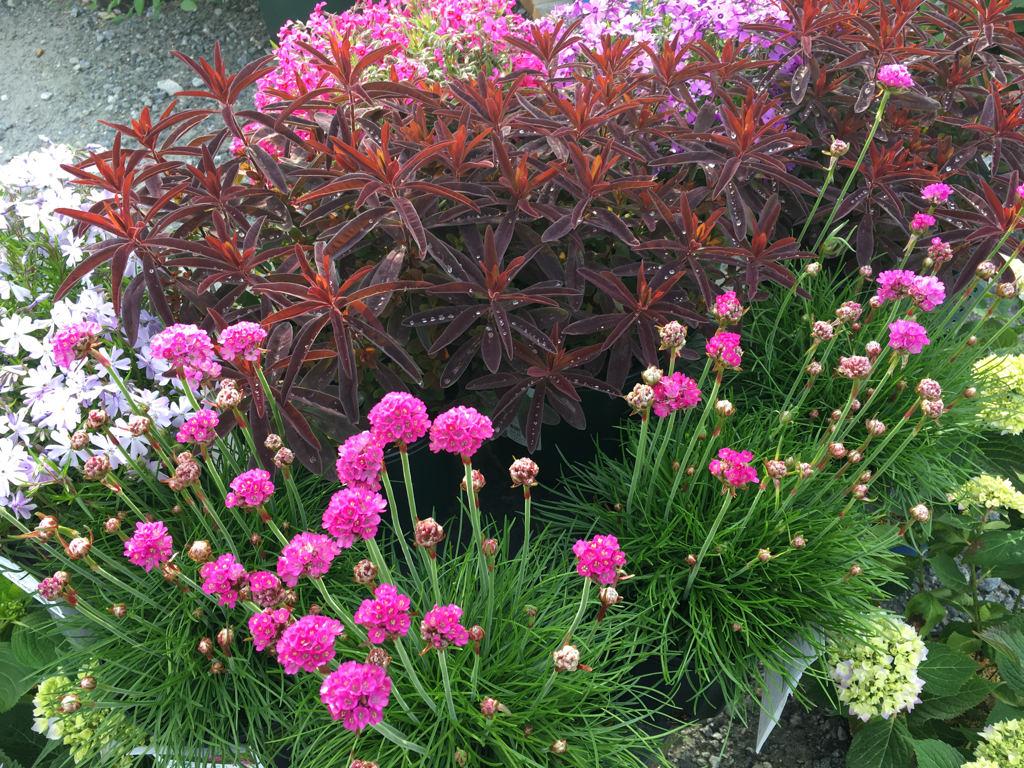
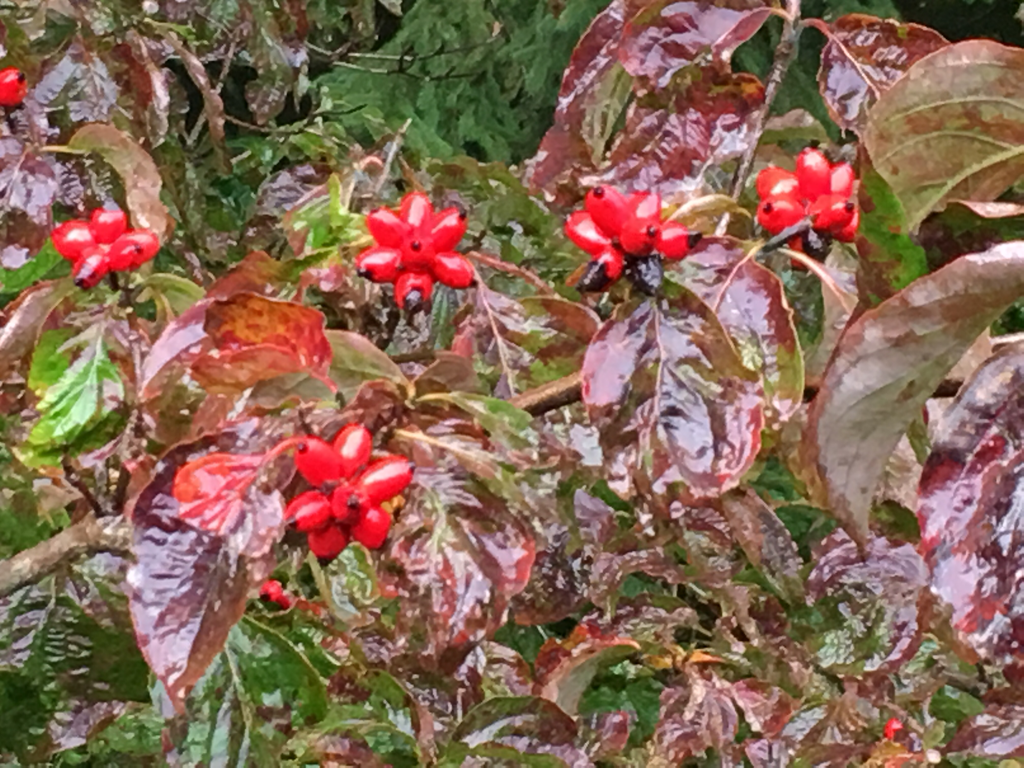
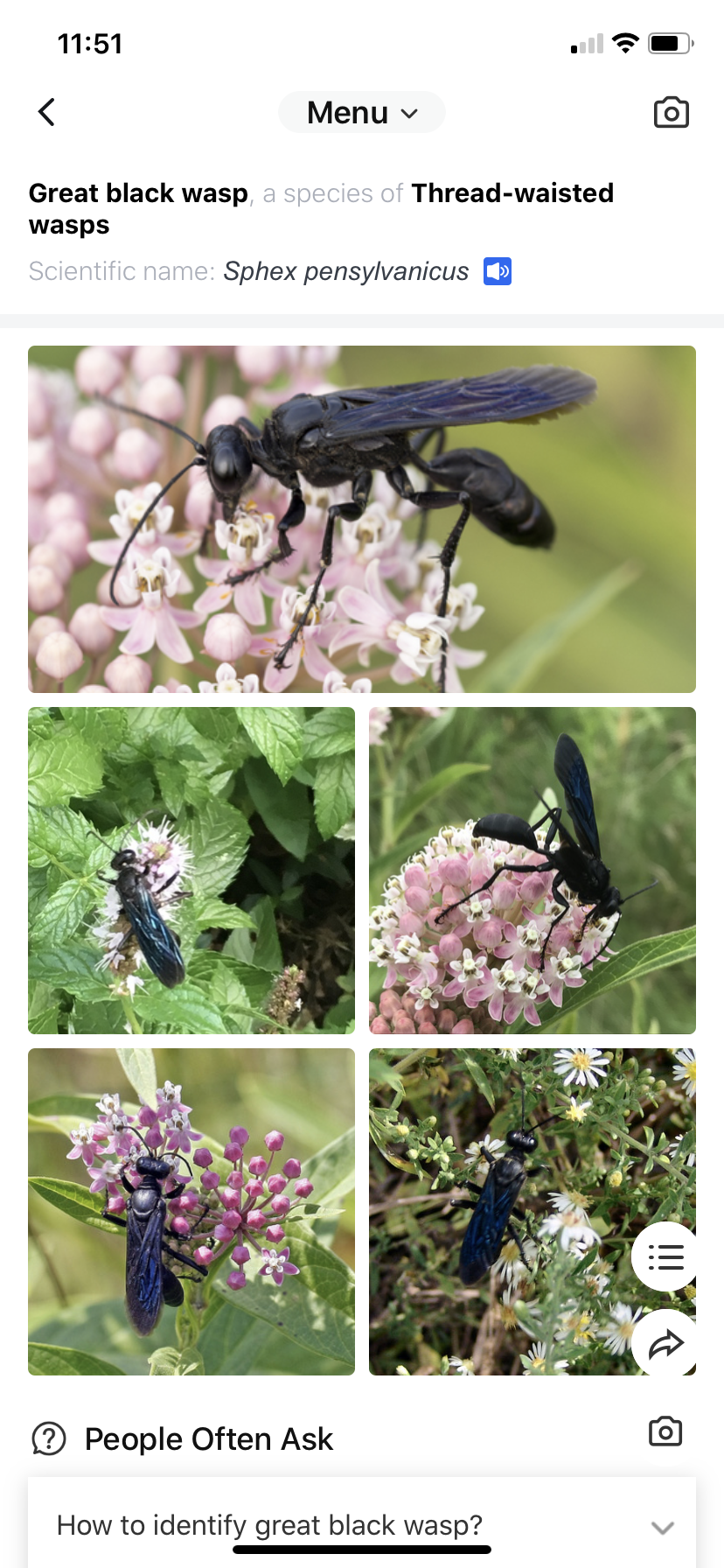
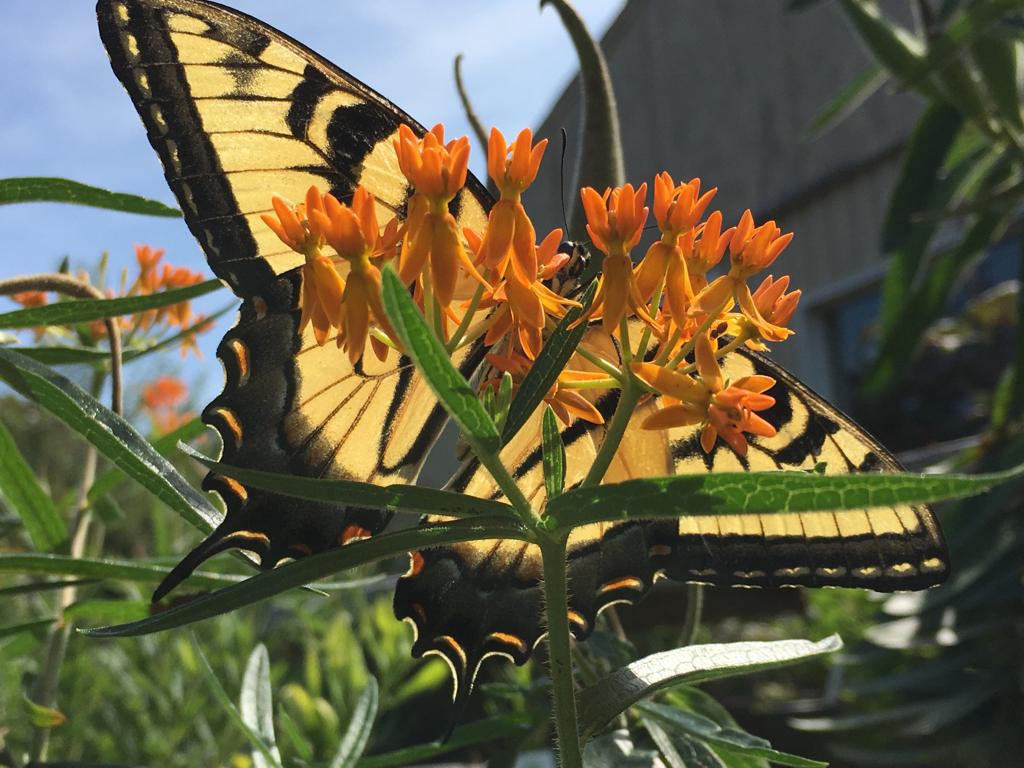
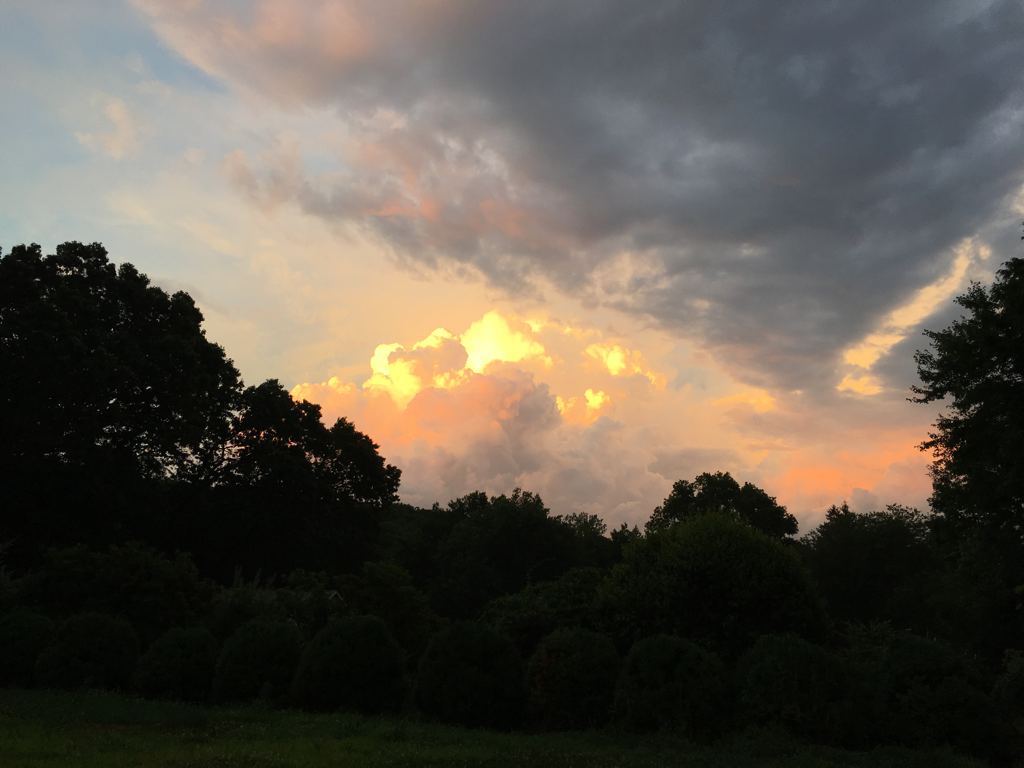
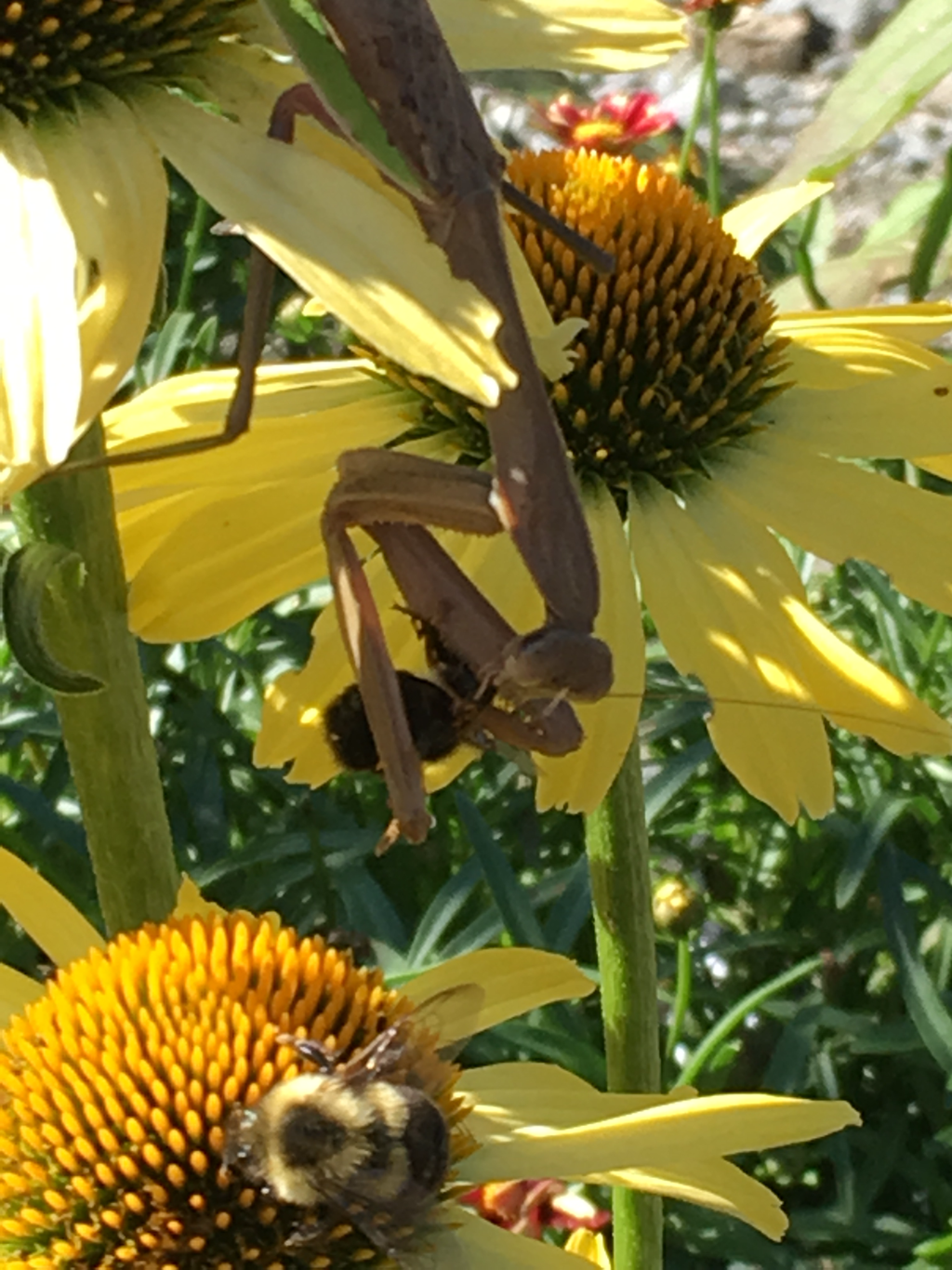
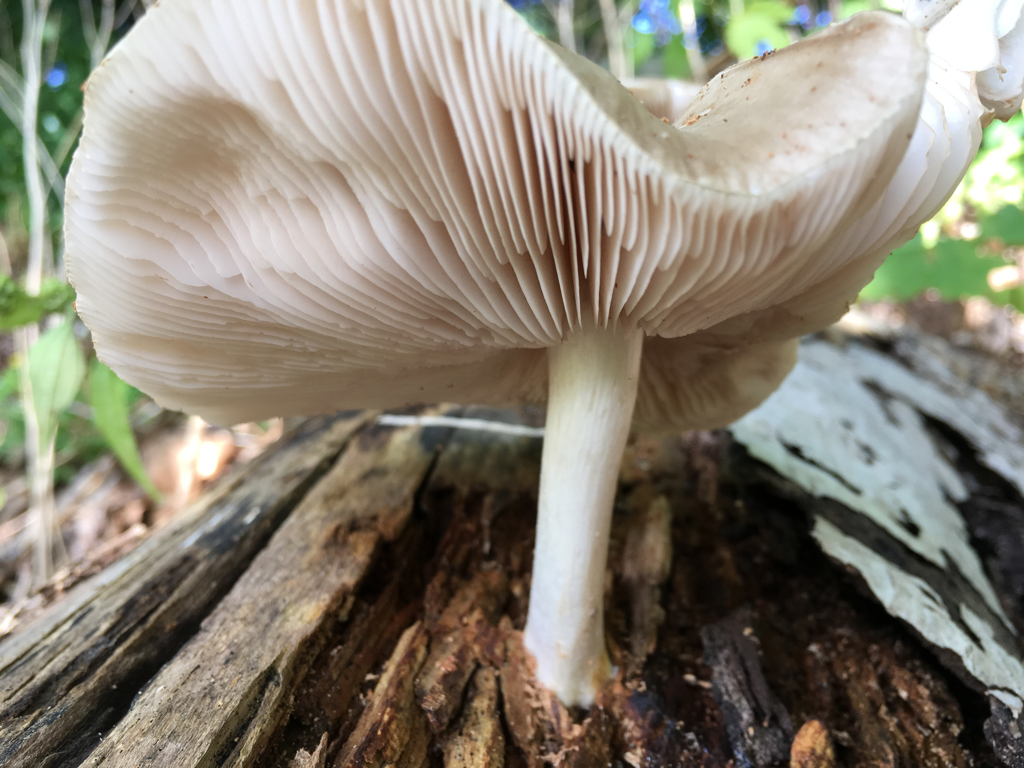
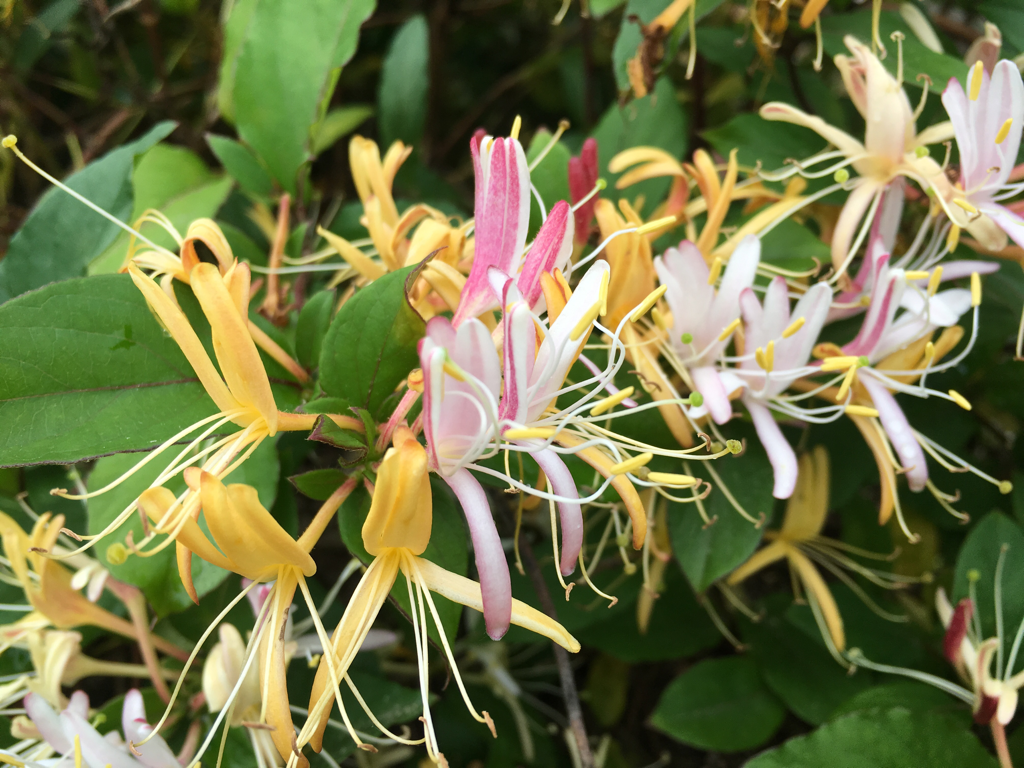
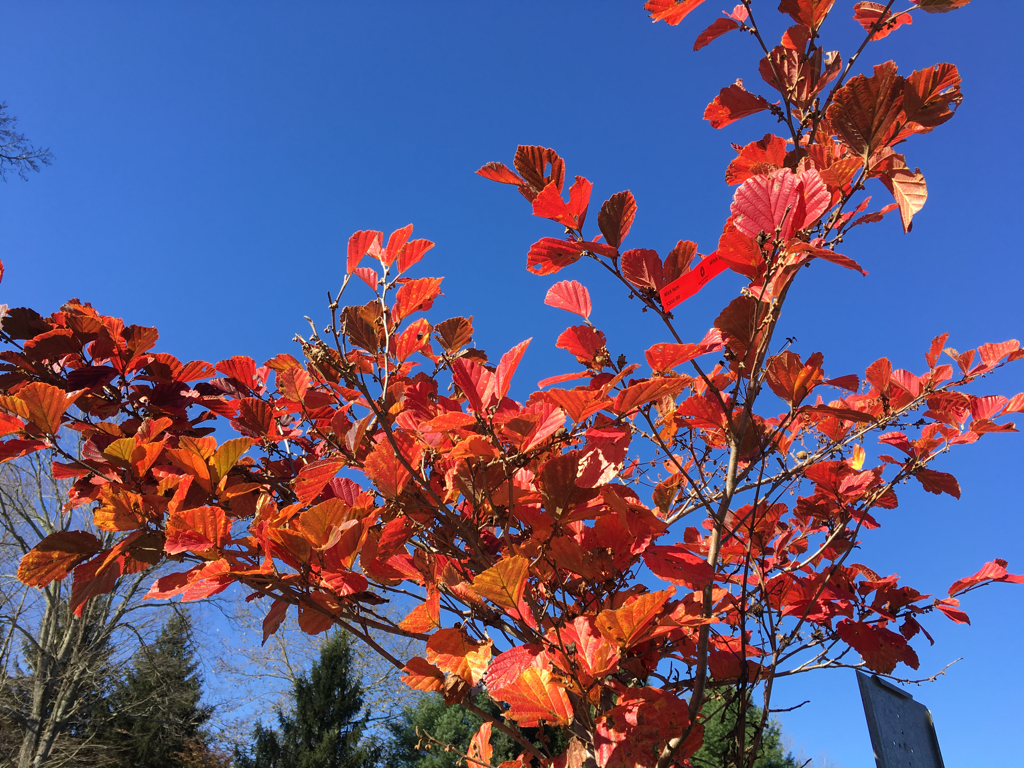
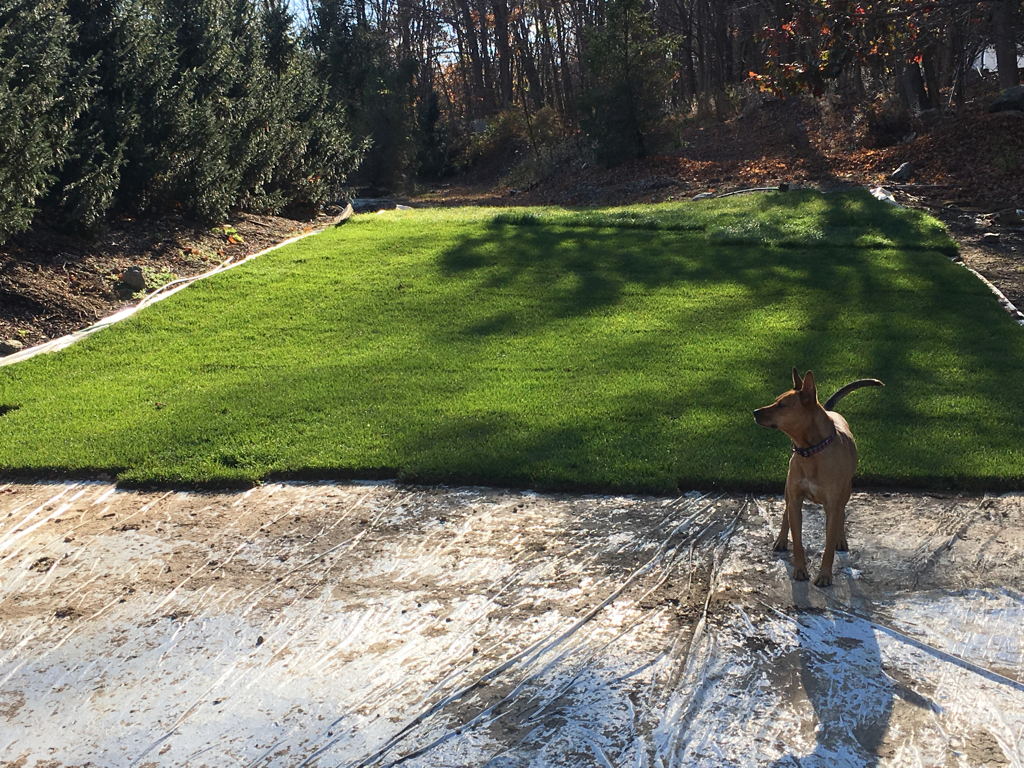
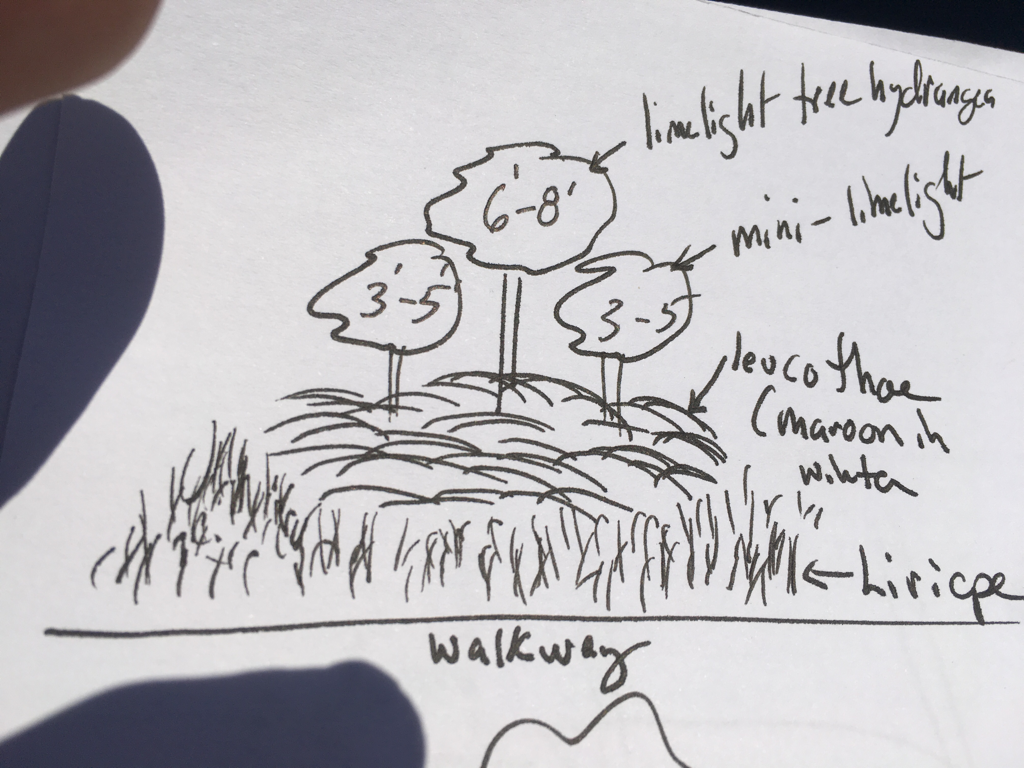
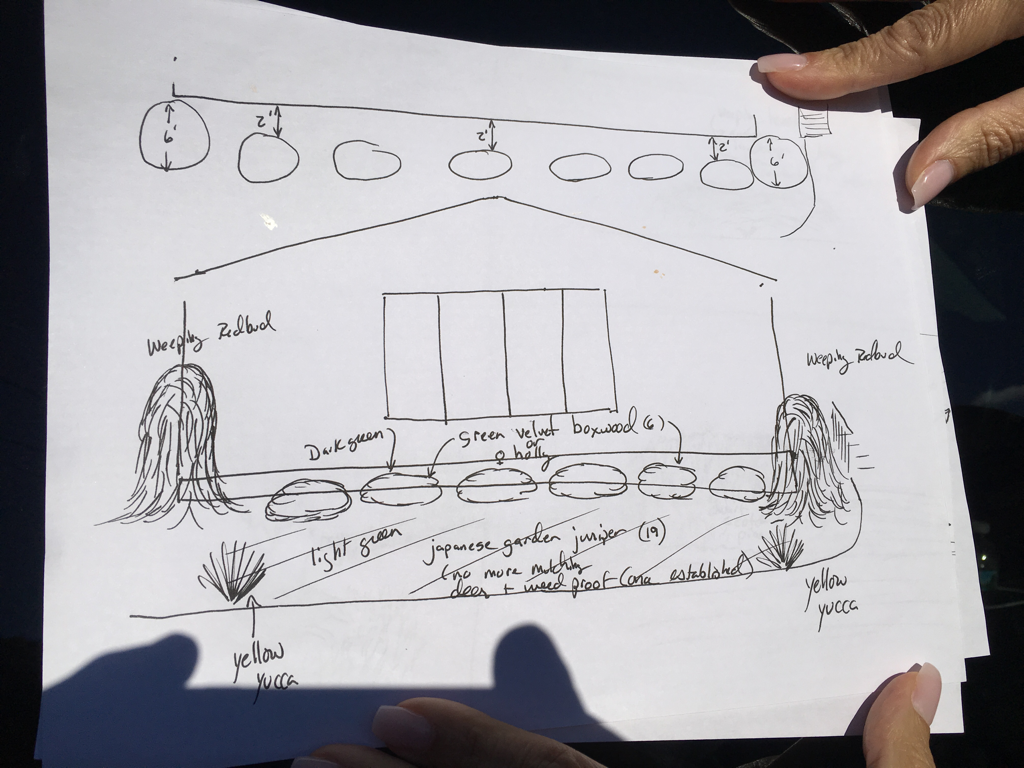
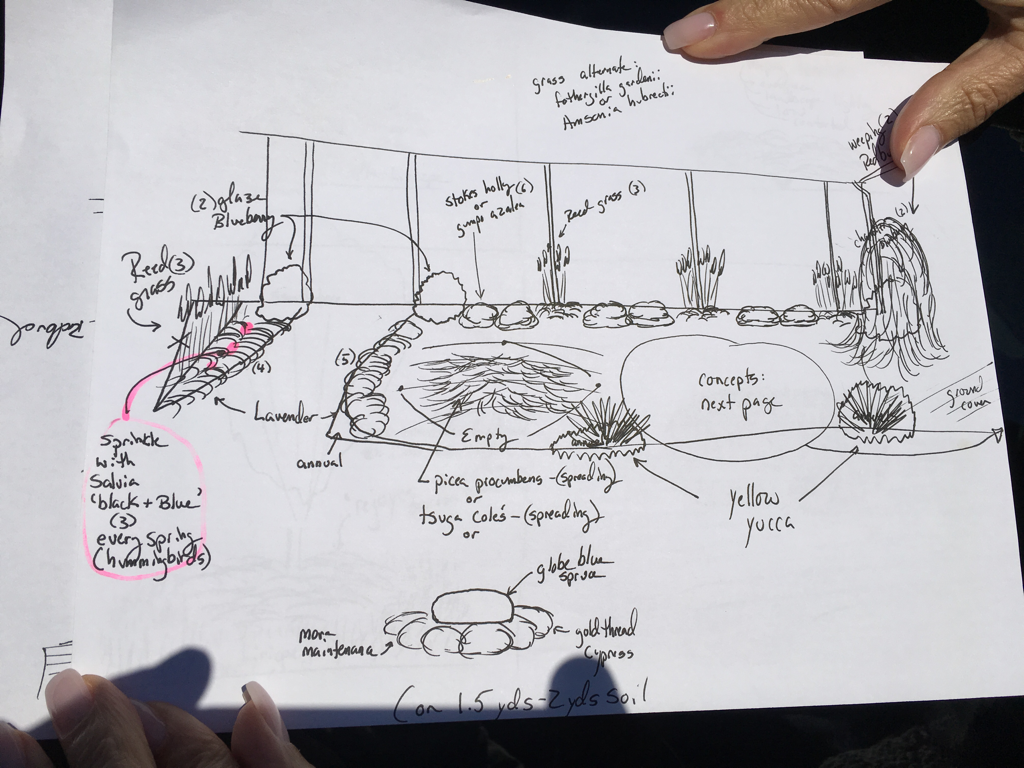
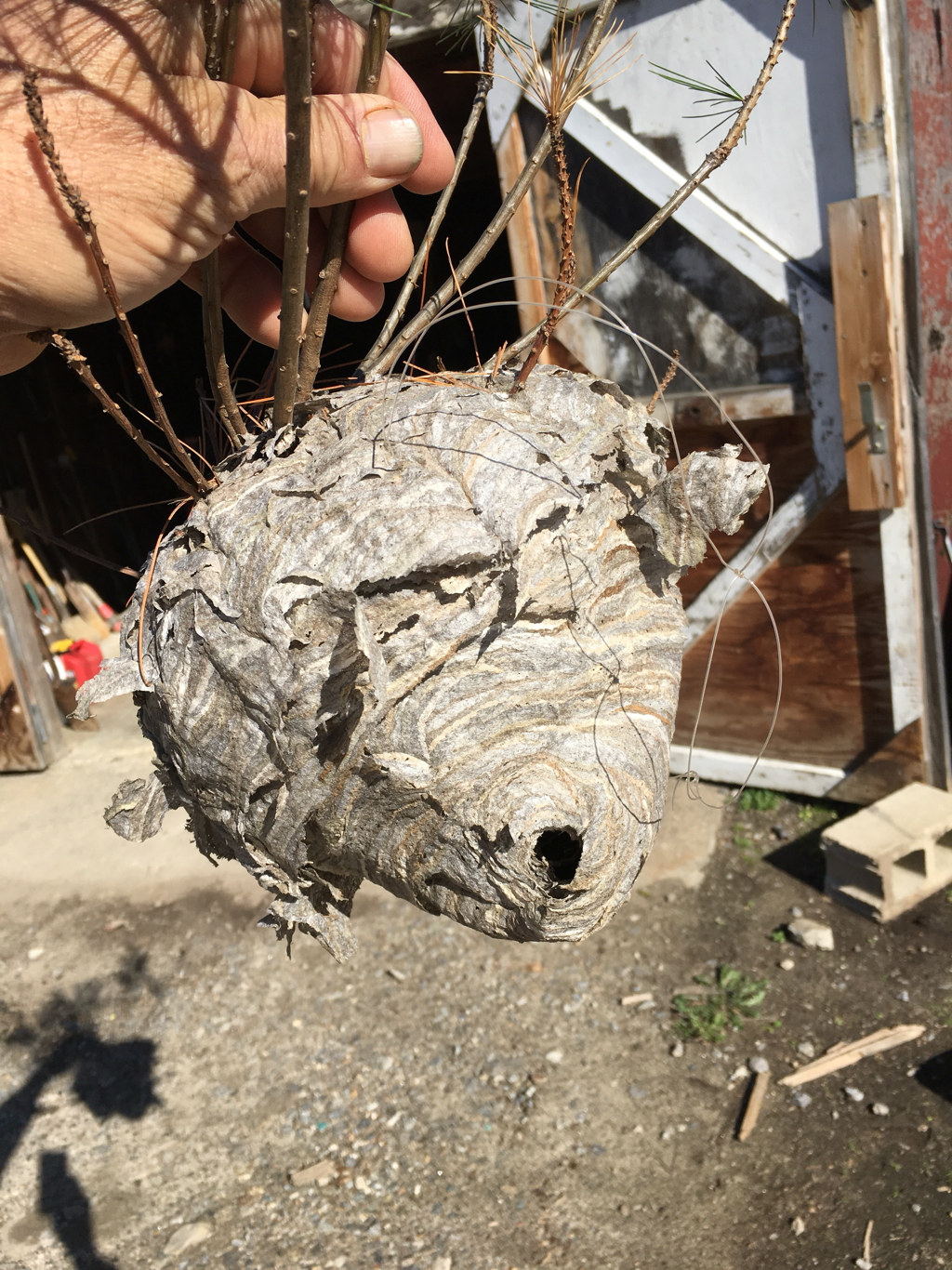
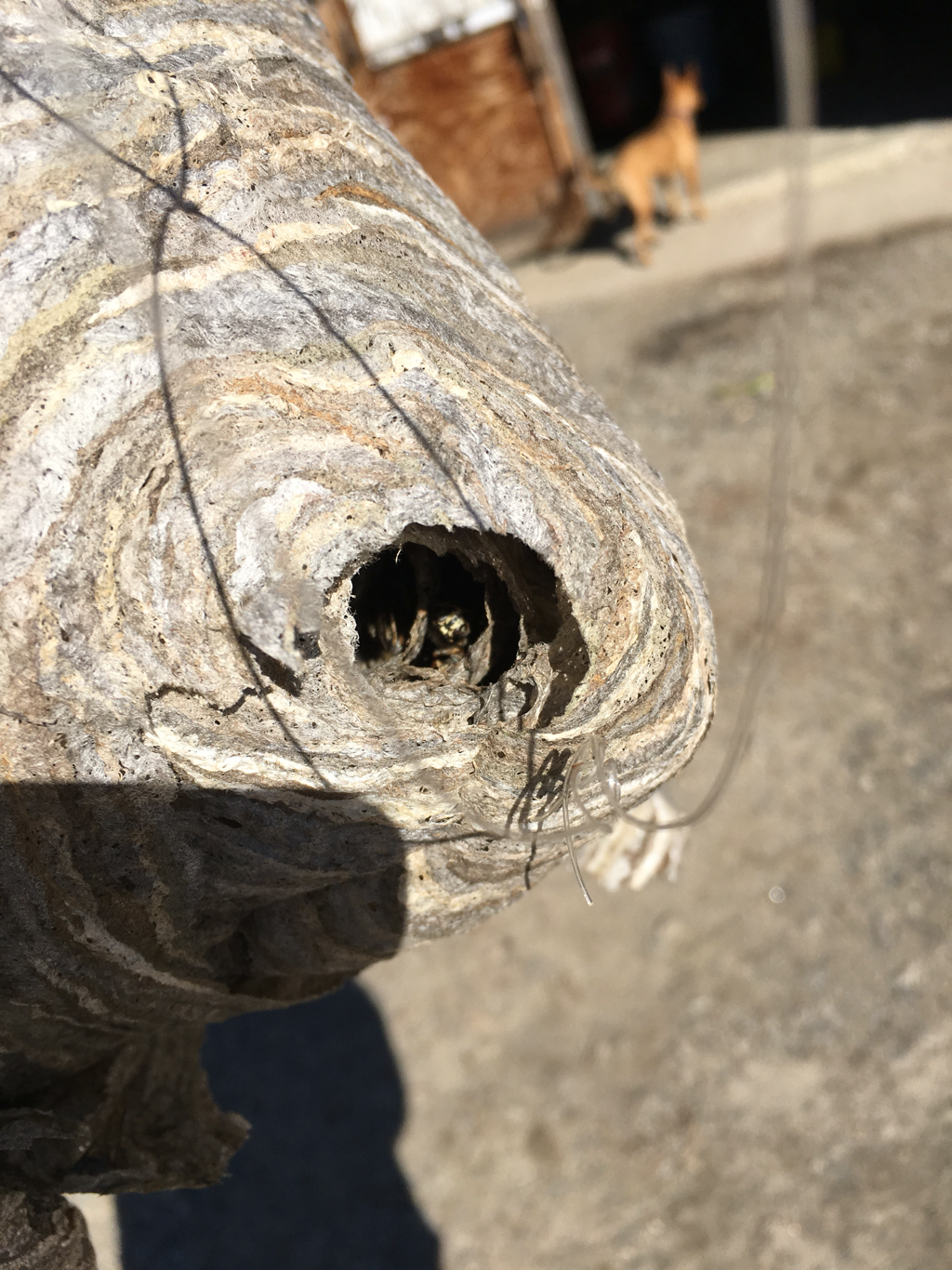
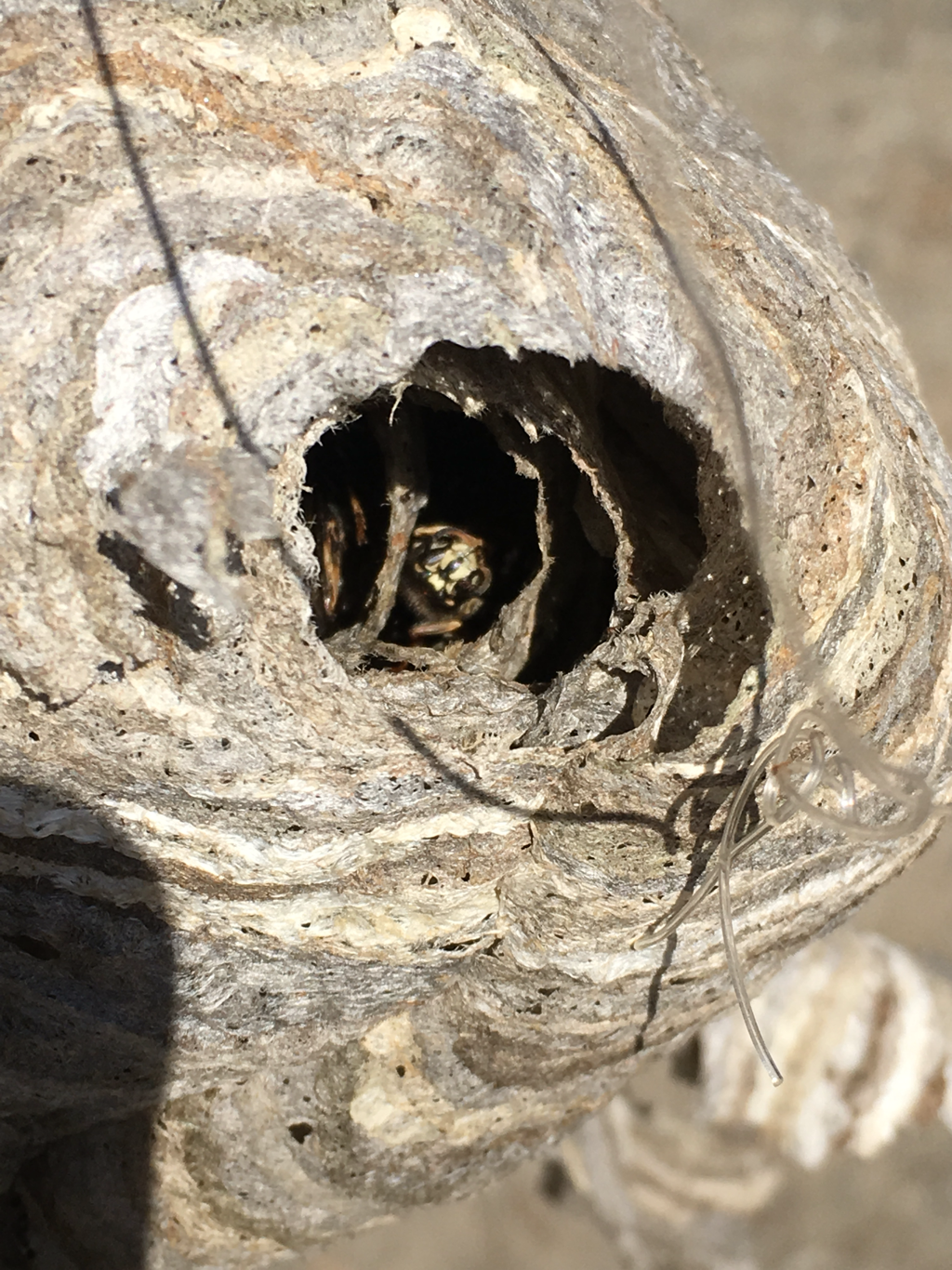
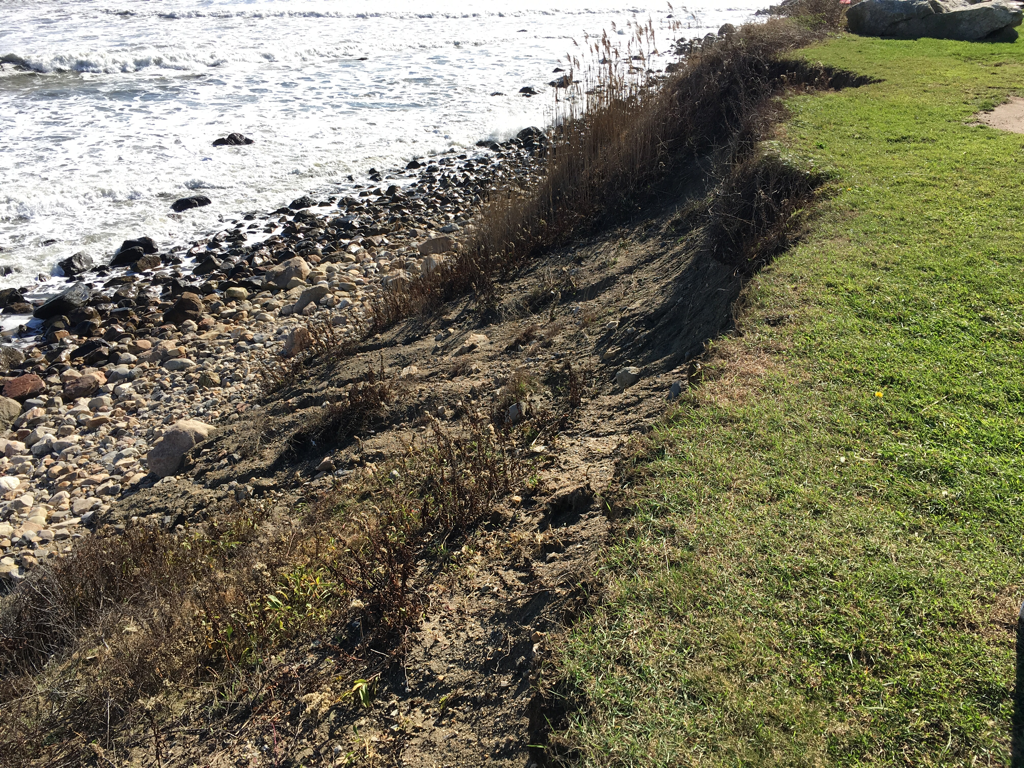
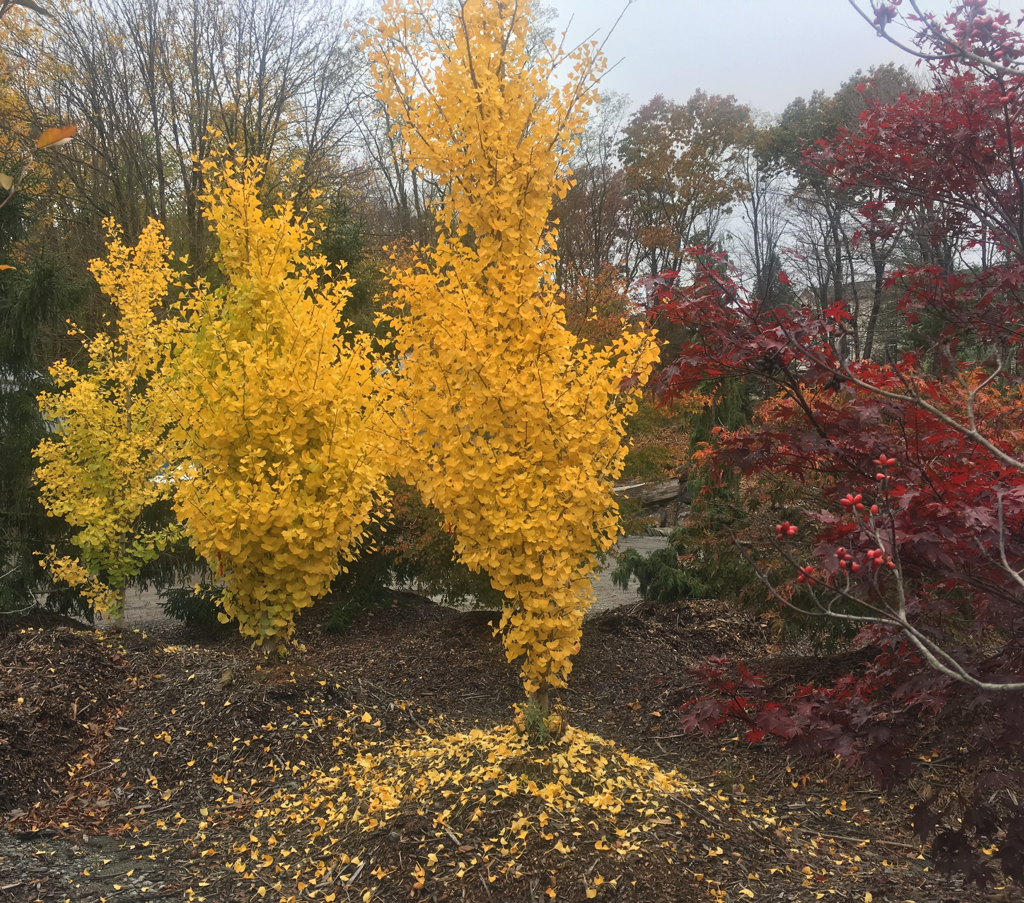
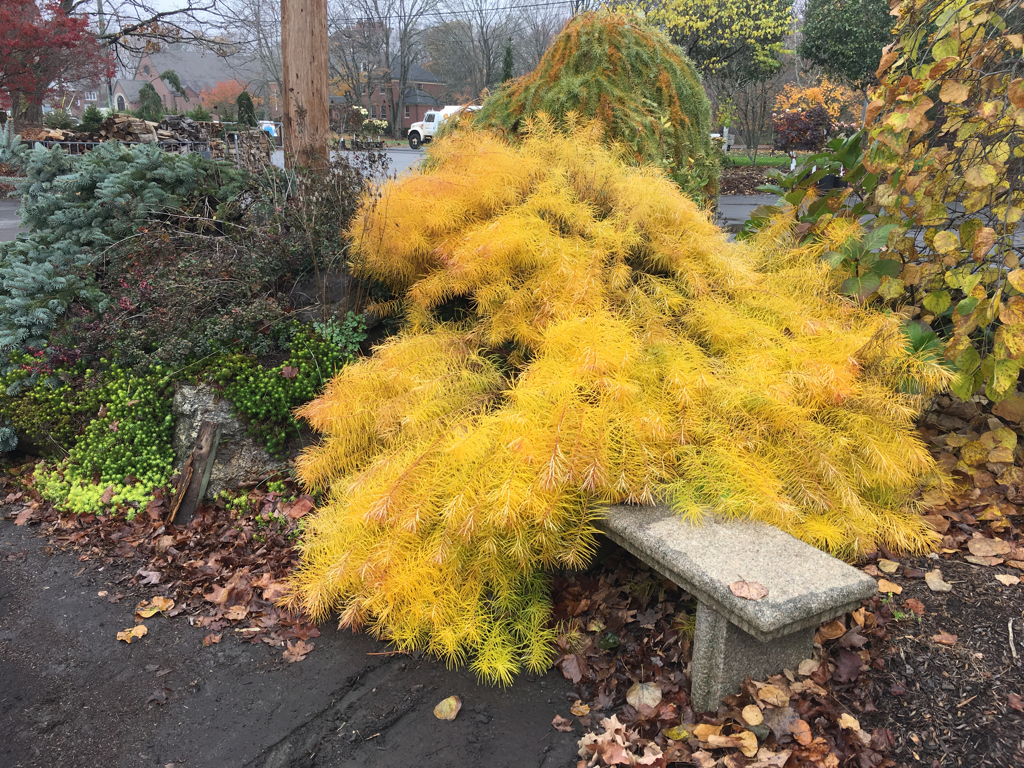
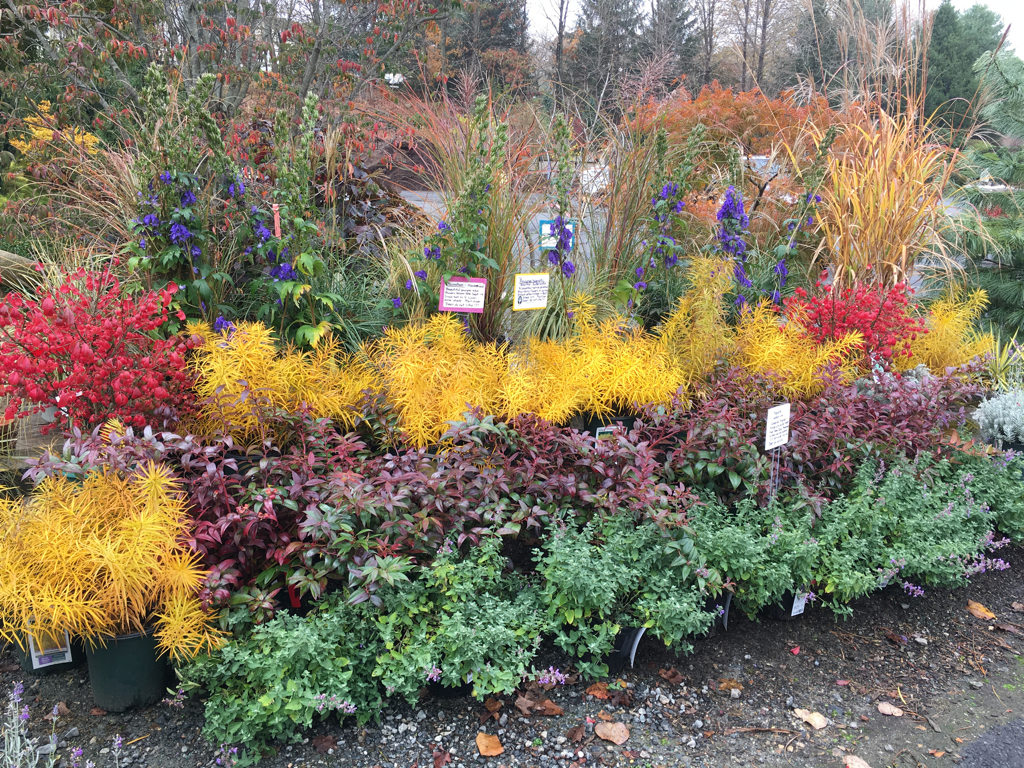
 RSS Feed
RSS Feed